#loh 30 day challenge
Photo
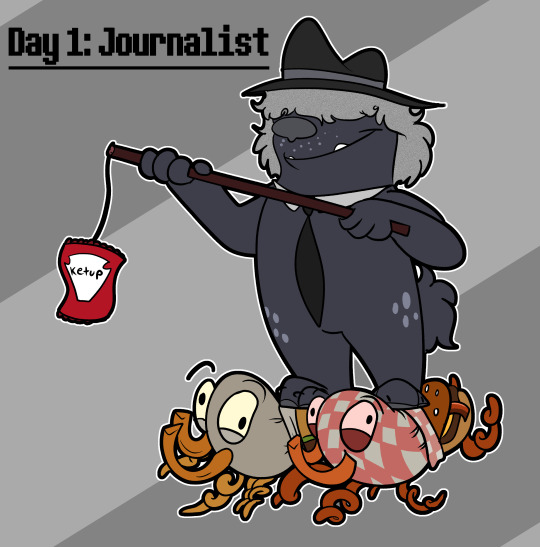
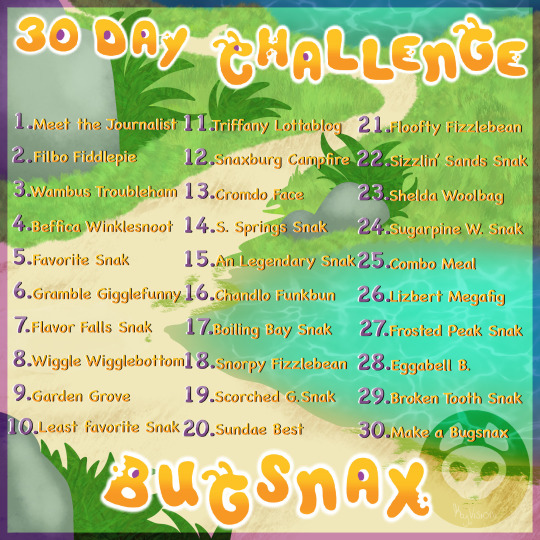
Doing the Bugsnax 30 day challenge (But..it’ll be at my pace so it’s more ‘30 Piece Challenge’!)
Day 1: Meet the Journalist.
Tologne(Pronounced Tuh-Loh-nee) Twotones is the journalist that I came up with!
They are very innovative- and this is how they figured out how to fast travel. When they told their bestie/Crush Filbo, Filbo laughed and went “Have Bunger, Will Travel they always say!” and Wambus went “No one says that.”
54 notes
·
View notes
Text
Day 5 - Describe three qualities you love about yourself and why you love them
30 days gratitude challenge
Hemmm 3 yah, suka bingung menilai diri ini karena aku orgnya ngga pedean.. Baiklah akan kucoba
Sensitif dan pemerhati, apa bisa dikatakan empatinya terlatih ya? Karena bapak mengajarkan kami dgn keras untuk bersikap baik dan selalu perhatikan sekitar. Kepekaan harus selalu dipake, terlebih lg sebelum bertindak. Makanya kadang aku terlalu banyak pertimbangan, somehow works and the other side, no.. Tapi aku suka karakterku yg ini, disamping ada efek jeleknya jg. Dgn begini aku jadi bisa lebih wise untuk bertindak.
Good taste of musik. Let's say begitu ajayah terlepas dari selera musikmu apa yg pasti selera musikku bagus menurutku hehe. Suka musik mungkin berasal dari bapakku yg seneng koleksi kaset, kata bapak dulu saat bujang tiap gajian bapak beli kaset. Semakin kesini, media dengar utk musiknya bertambah, sound sistem dirumah jg ada. Jadi dr kecil udah diperdengarkan musik2 "tua" nya bapak. Tp saat SD ya suka jg musik anak2 atuh tp plus lagu dewasa jg haha. Bapak suka beliin kami kaset atau cd yg ori. Kdg jg yg bajakan gmn keadaan uangnya atau moodnya. Beranjak remaja, early 20 itu lagi seneng2nya explore musik dgn segala genre, semuanya donlot per album. Ternyata explore musik tuh jadi candu aja gt. Sampe akhirnya berhenti di umur 25an kira2, gatau knp kayanya ngga ada wkt kaya jaman mahasiswa. Jadi playlist musikku yaa itu2 aja tp ttp dgn selera yg bagus dong haha
I'm a funny person. Ya.. Kayanya aku seneng bercanda, doing silly things. Dan itu menulari suamiku, blio org yg superkaku tp ngga berlaku kalo sama aku. Bisa jadi bercanda bgt, kaya.. Loh kamu bisa jadi lucu jg yahh haha ganyangka, blio kan jayus bgt yaampun. Jadi ternyata lucu itu menular kalo sama org yg tepat yah. Juga berlaku di pertemanan, kayanya kalo ngga bercanda dan melucu sampe bengek tuh kureng gitu yaahhh
3 notes
·
View notes
Text
JAN, 30th 2024
HEYOOO HOLA!!! Back again with another inconsistent life journal of mine lol. I wanted to write every day but due to unexpected conditions and circumstances I couldn't do it daily. But I'll try to write if I have something in mind or if I have something to tell, aight?
Anyway so, udah minggu ke 3 aku nge gym kan, so far ternyata i don't really fancy lifting weight bcs?? idk why? but maybe because i don't like being pressured on doing something. Karena aku kan masih ada sesi PT yaaa which i also don't like about lifting weight. Sebenernya mungkin akan menyenangkan kalo PT nya juga menyenangkan cuma dari awal tuh ada bahasa dari PT nya ke aku kayak "nGapAiN kAmU hiRe PT? kAlO gIni aKu kErjAnyA cUmA tiM hOrE kArEnA kAmU bELuM tAu ALaT.." (っ- ‸ - ς) what the heck? aku kan hire PT cuz what if I get cramps or injury?? aku cuma meminimalisir bencana gitu loh. Sebel banget sih ga sabar sesinya beres kalo kayak gini caranya. Males gitu jadinya setiap mau ada sesi sama PT tuh huft...
Dan kemarin aku coba kelas yoga, and i loved it? walaupun ga bisa tapi aku suka karena dikelas cuma ada 4 orang 5 dengan coach nya.. Hari ini juga aku ikut kelas yoga lagi sambil nunggu fanny heheeh.
Aku juga ada keuhan nih sama tubuh aku:( kenapa ya badan aku tuh ngeselin banget, aku tuh selalu laper gitu loh kayak ga ada kenyang-kenyangnya:( sedih banget.... tapi kalo aku makan aku gede parah sih, jarang makan aja dah gede palagi sering makan, mau meledak kali badan ku nih (˚ ˃̣̣̥⌓˂̣̣̥ ) makanya aku mau ada resolusi juga nih sekalian mau nantang diri aku sendiri karena kayaknya aku tuh kurang nantang badan aku sendiri makanya aku ga kenal sama badan aku sendiri.
CHALLENGES FOR MYSELF ARE:
Kurangi/tidak konsumsi gula dalam waktu 1 bulan. NO ICE CREAM, NO DESSERT, NO RICE (or a little rice), NO SYNTETIC SUGAR pokoknya selama 30 hari or a month.
Hit the gym/class min 4 days a week karena aku keknya ga bisa deh sering-sering beraktivitas berat karena aku tuh kurang fit gitu. Mungkin nanti setelah 3 bulan sering aktivitas bakal kebiasaan.
DEFISIT KALORI!!!! Ya Allah bantu saya agar saya dapat makan dengan porsi kecil. Mulai bulan depan tuh kayaknya harus balik lagi ke catering diet deh biar kalorinya dah di atur sama cateringnya.
Tapi yang paling utama yang mau aku lakuin itu kurangi konsumsi gula sebenernya. Mungkin agar sugar rush aku bakal minum kopi hitam aja sebelum gym.
Bismillah Ya Allah, berilah aku kemudahan dan keringanan untuk aku menjalankan ini dan menjadi kebiasaan baik buat aku aamiin.
Sekian.
0 notes
Text
30 Days LoH Day 29
Most memorable quote
Darkness that tears through the moonlight!
ok im kidding i wrote it down lemme copypaste from my diary

There is absolutely no reason to protect or respect a corrupt practice that forces others to lose their humanity, even if you try to package it as a “tradition”
It’s cut off from the rest of the conversation, which coincidentally happens in the same cutscene as the ‘darkness moonlight’ discussion btw, but I remember this line often enough to cite it here
...
oh, and (paraphrased)
I don’t want to waste my feelings on a tool.
[update]
You’re gonna need another cleric to heal that burn for you
7 notes
·
View notes
Text
Ada Apa dengan Tergesa-gesa? - Part 1
Halo netizen tumblr! Kali ini saya ingin membahas mengenai tergesa-gesa. Loh, ada apa emangnya dengan perilaku yang satu ini? Kalian yang tinggal di perkotaan besar pasti kerap kali menjumpai orang tergesa-gesa, bukan? Mulai dari tergesa-gesa berangkat ke kantor, berangkat ke kampus, hingga tergesa-gesa dalam memiliki sebuah skill. Yups, langsung aja kita bahas yuk!
Sedari kecil saya terbiasa dididik untuk mempersiapkan segala sesuatu dari jauh hari agar tidak tergesa-gesa. Seperti menyetrika seragam sekolah untuk satu pekan, menyiapkan tas sekolah sedari malam, hingga menyelesaikan tugas sekolah juga harus dilakukan jauh dari batas pengumpulan. Jujur saya kerap merasa tertekan dengan didikan seperti ini dan alhasil saat di sekolah menengah saya meninggalkan didikan ini. Namun lambat laun saya mulai menyadari, terutama belakangan ini, bahwa apa yang diajarkan oleh keluarga saya ternyata memang berguna di masa depan. Saya menyesali beberapa hal yang tergesa-gesa saya lakukan. Sebenarnya kenapa sih bisa muncul sikap tergesa-gesa?
Menurut saya sikap tergesa-gesa muncul karena beberapa faktor. Pertama adalah kebiasaan menunda karena jika kita mengerjakan sesuatu sesegera mungkin tentunya kita tidak akan tergesa-gesa, bukan? Kedua adalah sikap meremehkan. Kerap kali kita meremehkan hal-hal kecil yang kita anggap akan mudah diselesaikan. Padahal sesuatu yang sangat mudah diselesaikan sekalipun memiliki peluang hambatan eksternal, bukan? Misal, aktivitas menyetrika pakaian adalah hal yang relatif mudah dilakukan dan kamu menganggapnya bisa dilakukan 30 menit sebelum berangkat kerja. Namun ternyata saat hendak menyetrika terjadi mati listrik. Nah, hal yang diremehkan bisa membuatmu tergesa dan mengacaukan harimu, bukan? Faktor ketiga adalah perfeksionis. Loh kok perfeksionis? Iya, terlalu asyik mengikuti serangkaian step untuk perfeksionis membuatmu tak sadar bahwa banyak waktu terpakai dan deadline semakin dekat. Alhasil kita menjadi terburu-buru. Maunya perfect tapi malah tidak kunjung usai apa yang kita kerjakan. Misal saat kamu mengikuti challenge menulis setiap hari di 30 days writing challenge kamu menunggu datangnya inspirasi terbaik hingga akhirnya banyak waktu terbuang untuk mencari inspirasi dan akhirnya batas pengumpulan tulisan tanpa sadar tinggal menghitung menit. Rugi sekali, bukan?
Bersambung...
2 notes
·
View notes
Text
Day 1 : Who am i?

Describe your personality
Baiklah 30 days writing challenge accepted
Sebenarnya pengen ikutan dari september kemarin tapi sepertinya ruang gerak dalam pikirku sedang dibatasi tembok-tembok literatur non fiksi beserta segelumit hipotesanya
Dan sekarang ku pun tiba dalam masa menikmati kemerdekaanku. 2 bulan yg berusaha untuk kucukupkan, why not mulai menghiasi blog lagi dengan rangkaian kata alaku
Hari pertama diminta untuk mendeskripsikan diri, hmm cukup sulit ya, ntar jatuhnya self claimed haha
Well, namaku Nova Betries, bisa dipanggil nova, nobet, betries, ibet, unyuk yaps sederetan nickname dr temen SD sampe sekarang.
Personality ya, secara tes MBTI per oktober 2020, I am an ENTP, hmm surprising sihh secara diriku ENFP garis keras karena 4 tahun terakhir beberapa kali tes, I was an ENFP
Tapi setelah baca blog temen yang pernah konsul ke profesional ternyata ngomongin MBTI ini emang wajib banget diambil per enam bulan sekali.
Katanya kepribadian itu sesuatu yang dinamis dan bisa berubah seiring berjalannya waktu. Lingkungan dan orang-orang yang membersamai kita tentu akan memberikan pengaruh, pandangan dan cara respon kita yang berdampak pada kepribadian kita. Wadidaw ciyuss amat sih
ENFP yang extrovertnya 67% makin kesini makin berkurang. Dulu pas kuliah extrovert parah, banci tampil, demen debat, cukup vokal, plus SKSDnya tolong ya nov tolong haha
Saya si pecinta mi goreng ini, makin kesini makin menikmati peran sebagai supporting system, tidak nyaman dengan namanya “over ekspose” walaupun dalam konteks prestasi diri, sering dibilang supel dan rame, juga dikatain plin plan karena anaknya kemana aja ayok, payah kalau urusan decision maker dalam konteks daily dan relationship krn selalu teringat pesan ibu, “orang lain belum tentu bisa terima apa yang kita putuskan tapi kalau diri sendiri pasti bisa nerima keputusan apapun itu” tapi tetep dalam konteks bahagia menjalaninya ya mungkin tipe yang menghindari konflik kali ya.
Untuk urusan berkenaan diri sendiri cukup keras kepala, merasa paling tahu yg terbaik utk diri yg akhirnya tergolong cuek dan anti rempong, senang untuk direpotin teman-teman dalam semestaku, feel free gaes i’m happy to help you sekalipun dalam konteks jadi tong sampah bacotan, noprob sudah biasa. Loh kok gtu? tenang karena manusia sepertiku jg butuh tong sampah itu kok dan gak banyak yang bersedia♥️
Sekali lagi semoga ini bukan self claimed ya😊
3 notes
·
View notes
Text
Day 18 yang seharusnya kemarin:(.
Ok, aku tidak ingat sama sekali dengan challenge hari kemarin wkwk. Baiklah akan aku lunasi hari ini.
Jadi, tiga puluh fakta tentang aku nih temanya. Banyak juga, ya. Haha, berasa sedang di invasi sama diri sendiri:').
Okay, let me in...
Aku adalah nasiholic. Ga ada lauk aku akan tetap baik. :)
Aku suka warna biru dan merah
Aku pernah jadi kiper di fc temen aku (grup cowo)
Aku anaknya random
Aku suka banget baca yang berbau dunia, entah itu atlas, globe, peta, whatever lah. Pokoknya addict banget.
Aku anaknya cerewet
Aku anaknya sensitif dalam hal apapun. Iya, gampang baper.
Aku adalah putri kesayangan bunda yang cengengnya gak ketulungan :)
Aku lebih suka naik gunung daripada harus surfing di pantai
Aku suka teh tanpa gula daripada kopi
Aku anaknya males pake make-up
Penyuka kemeja kotak-kotak atau garis-garis vertikal
Lebih suka beli baju di toko seconhand daripada beli baru
Pernah jadi juara ke-3 lomba cipta dan baca puisi tingkat kabupaten
Hobi baca KBBI baik buku fisik atau aplikasi online nya
Aku anak ubi, apalagi kalau itu ubi Cilembu. Itu enak banget parah!
Aku ga suka sama buah pepaya, sirsak, dan jambu
Suka jalan kaki daripada harus naik kendaraan
Pernah jatuh pingsan dari atas meja saat sedang mainan sama teman SD
Suka kaos over size daripada yang skinny
Paling ga pandai dan sering down kalau dihadapkan sama mapel yang masih bersanak saudara sama matematika
Pernah punya skill berbahasa Mandarin
Pelajaran paling aku suka sewaktu sekolah adalah Basindo, basindo, basindo:) , basing, sejarah, geografi, ekonomi, antropologi dan biologi
Pernah punya cita-cita jadi chef :')
Aku anaknya ceroboh. Hehe. Apalagi kalo yang disinggung kacamata. Miopi human pasti paham yang aku maksud
Paling ga bisa makan gorengan. Sakit perutku:'(
Pernah berteman dengan rumah sakit, obat, alat terapi, dan psikiater
Aku sedang berusaha menantang diri sendiri untuk tidak sering berkaca kecuali untuk wajah saja
Aku anaknya peka tapi kadang yang aku pekain suka ga notice. Loh ko ngarep feedback haha. It was joking;)
Punya tanda tangan yang ga bisa di salin sama orang-orang karena panjang kayak akar pohon beringin.
Huft wa alhamdulillah....
Finally, 30 fakta tentang aku yang aku sendiri saat nulis geli bayanginnya. Haha. Yang aku tulis adalah apa yang terbenak aja jadi mumgkin kalau dipaparin lagi bakal lebih banyak. Wkwkw. Duh cukup di 30 aja deh. Ampuuun.
I've done lah ya. Udah gatau mau ngomong apalagi.
Terima kasih 🌼
Selambu merah jambu, Oktober 2020 1
#days18 #30dayswritingchallenge #30factsaboutme
4 notes
·
View notes
Text
#day3 : a memory
hai, ini sudah jam 22.23 alias malam banget, jadi aku enggak bakal ngetik banyak-banyak juga karena udah mau tidur~
sedikit rangkuman kegiatan hari ini: kelas Kimia, dilanjut belajar Statistika karena besok kuis dan aku tiga pertemuan ini masih planga-plongo doang di depan materinya, habis itu kelas PI dan aku ketiduran (untuk kesekian kalinya, ya. bingung nggak sih kenapa dari TK ngantukan mulu pas kelas). sore-sorenya keluar rumah, belanja bahan-bahan buat masak mentai, dan pas ambil masker, aku baru sadar udah tiga minggu enggak keluar rumah.
lama banget ternyata. tapi masih pandemi juga sih, bener harusnya stay di rumah.
habis itu karena sayang jarang-jarang keluar rumah, sekalinya keluar cuma belanja bahan terus pulang, akhirnya beli cilor bursa kampus yang enaknya gaada yang nandingin, sejauh ini sih. kalo ketemu cilor yang lebih enak dari itu, tolong kabarin aku ya.
malamnya masak mentai, ya jelas enggak sendiri HAHAHA, sama kakakku dan ibuku bantu sebentar di awal. tadi pertama kalinya aku masak mentai dan enak banget dong HAHAHAHA
(menyombongkan diri)
terus, ya udah. malah main Among Us dan lupa nggak menjalankan 30 days writing challenge ini HAHAHA. untung sekarang inget.
kok lama-lama Tumblr-ku ini jadi kayak daily journal-ku ya. sebelum nulis sesuai tema cerita dulu aku hari ini gimana :(
(plis inget besok enggak usah cerita lagi. kelamaan.)
well, about memory. di temanya cuma “a memory” sih, jadi artinya aku cuma perlu tulis satu memori aja ya. karena aku orangnya juga lupaan, jadi sering enggak ingat kejadian-kejadian dulu, meski berkesan sekali pun, jadi aku bakal cuma menceritakan satu memori.
apakah ini yang paling berkesan? karena (sekali lagi) aku banyak lupa sama kejadian-kejadian yang pernah terjadi dalam hidup, aku enggak bisa jelas mengklasifikasikan ini memoriku yang paling berkesan. tapi yang jelas, ini adalah memori yang berjalan paling lama sebelum akhirnya selesai. semacam, itu adalah memori yang rasanya cuma mimpi, dan tau-tau aku ditarik kembali ke realitas.
iya, tiga bulan itu rasanya kayak cuma mimpi, dan tau-tau aku sekarang sudah di sini lagi. di realitasku lagi, dan tiga bulan itu rasanya kayak anomali dalam hidup. aku bahkan sudah lupa kejadian-kejadian apa saja yang aku alami di sana, tapi rasanya terpautnya masih ada.
(benar nggak sih aku pilih kata “anomali”? nanti aku cek lagi deh di kbbi).
iya, iya, memori yang mau aku tulis di sini adalah tiga bulan ke Mesir. aku nggak tau mau mulai dengan mendeskripsikan apa dulu, sih. rasanya semua perasaan tumpah sekarang dan aku nggak bisa menuangkannya satu-satu dalam bentuk tulisan.
tiga bulan di Mesir enggak selalu menyenangkan. ada saat-saat aku down banget, bukan karena kangen Indonesia atau apa (karena funfact: aku enggak pernah homesick), cuma kayak... perasaan kosong tiba-tiba gitu. dan kalau lagi gitu, aku sering ke balkon sendirian, liatin apa aja yang bisa aku lihat dari sana. kalau lagi pegang ponsel, sambil dengerin Daylight. aku sering banget dengerin Daylight karena dulu lagu di hp-ku cuma ada itu aja sama Payphone. mau download Spotify nggak bisa. ngga suka juga dengerin lewat YouTube karena enggak bisa disambi buka aplikasi lain. dan nggak tau kenapa, terlalu mager juga buat download gratisan lagu-lagu lain. alhasil tiga bulanku di Mesir ditemani sama Daylight dan Payphone aja.
dan sekarang Daylight masih jadi lagu kebangsaan hidupku, simply because it was with me through my ups and downs, meskipun aku udah kenal lagu-lagu lain.
oke, balik lagi. tiga bulan di Mesir enggak selalu menyenangkan, tapi bukan berarti memorinya enggak membekas. aku masih ingat kebiasaan-kebiasaanku di syaqqoh. aku tinggal sama siapa aja di syaqqoh lantai enam selama tiga bulan itu. gimana hampir tiap hari pulang dari Markaz Nil selalu beli es krim mangga, atau rasa lain kalau mangga lagi ngga ada, kadang sekalian melipir ke HS yang ada di seberangnya. pesan fatiroh pas lagi jam hafalan waktu itu, malam kayaknya deh, dipesenin ustazah. jarang-jarang loh kelompok satu bersenang-senang HAHAHAH. sering banget beli Dina Farm. susu cokelat favorit keduaku tuh Almarai. suka-suka aja juga sama indominya sana, meski varian rasanya beda, tapi sama aja sih ada micinnya. Sunbite sih, jajan yang aku suka banget sampai kubawa pulang ke Indo dua bungkus. gimana enak banget rebahan seharian sambil main hp kalo lagi libur dan enggak ada acara pergi ke mana-mana.
dan waktu rihlah pertama ke Sinai. excited banget waktu itu. dari tiga kali rihlah ke luar kota, aku paling suka hotel di Sinai, sayang itu juga yang stay-nya cuma sebentar. seneng banget pas mulai ndaki. waktu itu aku kepanasan, jadi sarung tangannya kucopot. eh malah beneran jatuh satu, mau balik udah jauh. kuplukku juga kupinjemin ke temen buat wadah cokelat. saking excited-nya juga aku jadi jalan di depan, sebelah guide-nya sama Disa. enggak ngerti bapaknya ngomong apa. Disa aja yang nanggepin, akunya mah jalan sambil liat-liat langit aja.
abis dari Sinai, ke Dahab. hotelnya juga enak sih, ada rooftop-nya. tapi ngga tau kenapa tetep lebih suka hotel di Sinai. snorkeling di Blue Hole, terus jalan-jalan aja. naik ATV, aku yang di belakang, terus ngantuk. untung ngga ketiduran, terus oleng, terus jatuh :(
habis itu naik kapal kan ke laut apa sih, itu? pokoknya di situ snorkeling lagi. ada juga yang diving, tapi waktu itu aku belum berani, jadi snorkeling aja. sekarang udah berani, sayang udah telat beraninya. terus malemnya damai banget, asli. dengerin lagu yang Tuhan pertemukaan~ sambil tiduran jejeran, liat langit ataupun daratan ataupun apalah ya, anginnya semilir banget.
YAALLAH NGGA KUAT YA AKU THROWBACK GINI.
rihlah kedua ke Alexandria, asik juga. lingkungannya enak bener. main-main juga di pantai. sepedaan pagi-pagi. malem-malem naik bus tingkat keliling kota. asik sih liat-liat kota, tapi lama-lama dingin juga padahal udah pakai hoodie dan lama bener kelilingnya sampe ketiduran. ke perpustakannya juga asik, meski enggak liat-liat bukunya, malah sibuk ngerjain project.
rihlah terakhir ke Siwa. katanya waktu di jalan langitnya bagus banget, bintangnya banyak banget kayak jerawat (lupa siapa yang ngomong, kenapa analoginya jerawat banget deh HAHAHA), sayang ya bukan aku namanya kalau enggak tidur di jalan....
nyesel bangeeeet ga liat langit yang katanya bintangnya banyak banget kayak jerawat itu :(
hotelnya juga unik bentuknya. aku sekamar sama mba Tara, dan inget juga mba Tara waktu itu kekunci dan alhasil ngungsi ke kamar lain gegara aku waktu itu balik kamar duluan, kamarnya kukunci, akunya ketiduran. bangun-bangun jam empat pagi liat notif banyak banget dari Arra HAHAHAHA maap ya mba Taraa
ngapung-ngapung di danau garam juga enak banget. bisa santai rebahan di permukaan air tanpa takut tenggelam. paling seru jelas waktu offroad. aku duduk di dekat jendela, mana enggak pakai kacamata, tiap belok pasirnya masuk mulu ke mata. tapi tetap, aku suka banget offroad. main sandboarding, tadinya berdua sama Hera, dia di depan aku di belakang. eh dia meluncur duluan akunya ketinggalan, akhirnya aku nyoba lagi berdua sama siapa lupa.
setelah flashback gini, aku bisa mengklasifikasikan kalau memori di Mesir itu mengesankan banget, meski selama di sana rasanya nano-nano banget. seneng ada, sedih banyak, nangis pernah. intinya, tiga bulan di Mesir adalah hal yang enggak pernah aku lupakan. selain hal-hal yang tadi aku sebutkan di atas, pasti masih ada hal-hal mengesankan lainnya yang udah aku lupa, tapi intinya setiap perasaanku rasanya masih tertaut ke sana.
ceilah.
dan aku pengen banget balik lagi ke Mesir, tapi seangkatan gitu. kalau sendirian mah feel-nya beda nanti. aku pengen banget balik ke Mesir lagi. mau bener-bener nggak melewatkan kesempatan liat langit bagus yang bintangnya banyak banget kayak jerawat. mau foto-foto dengan benar, mengabadikan setiap kejadian sebaik-baiknya, soalnya waktu ke Mesir itu kamera hp-ku rusak jadi enggak bebas motret. mau minum Dina Farm setiap hari, karena di sini enggak ada yang seenak itu. mau pagi-pagi liatin kota sendirian di balkon. mau makan fatiroh, mau beli asob (gini nggak sih tulisannya?) yang favoritku bangeeet karena di Indo rasanya beda aja gitu. mau offroad lagi dan pakai kacamata biar enggak kemasukan pasir lagi.
dan mau banget melakukan banyak hal lagi. kira-kira bisa nggak sih seangkatan diagendakan untuk balik lagi :(
terakhir, asli sedih banget, karena tahun ini semua fotoku di Mesir ilaaaang. waktu itu lagi pindahin folder isi foto-foto Mesir ke dari ponsel ke komputer, langsung di-cut gitu kan. udah ke-copy, semua foto yang di ponsel udah hilang, eh pas buka folder-nya di komputer enggak ada isinya. enggak tau deh seribuan foto itu ke mana perginya.
jadi aku cuma bisa screenshot foto-foto Mesir yang pernah aku upload di media sosial dulu dan mau melampirkan beberapa di sini.
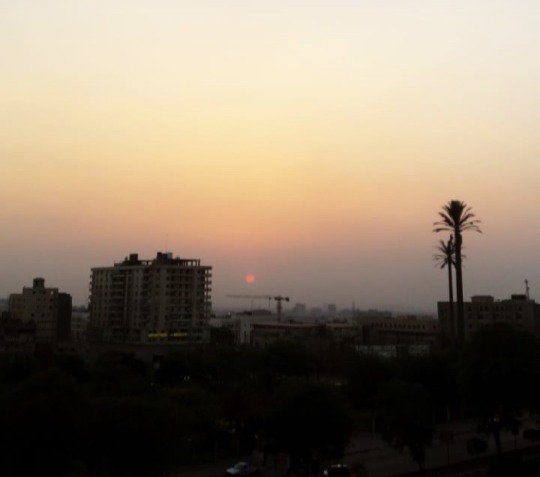
(dari balkon syaqqoh lantai enam)
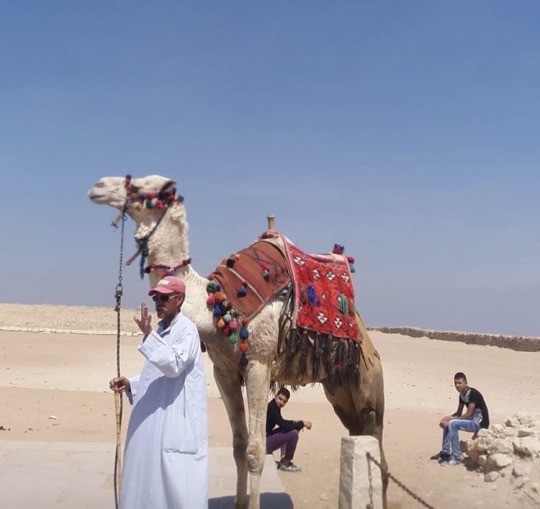
(di pyramid waktu itu)
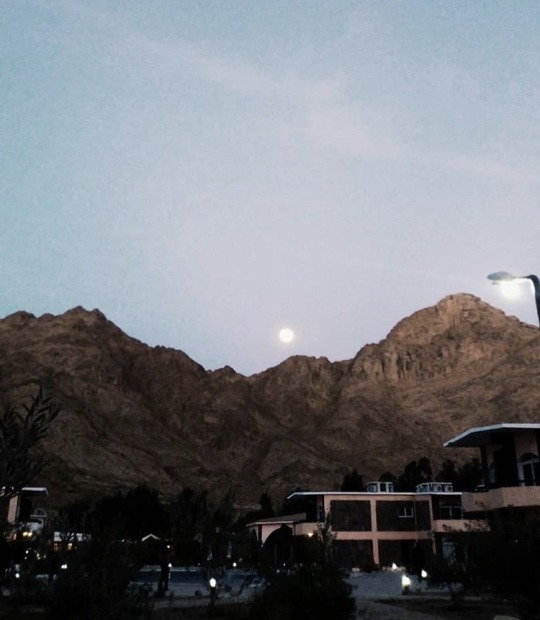
(dari hotel di Sinai. tapi enggak original, soalnya seingatku udah pakai filter Melbourne-nya Instastory)
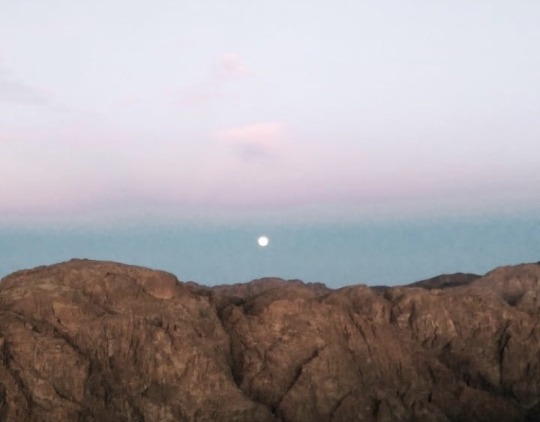
(pagi-pagi dari Sinai)

(naik ATV di Dahab!)

(ini pemandangan waktu malam-malam tiduran di atas kapal)
(satu foto di bawah ini foto siang-siang di Alexandria)
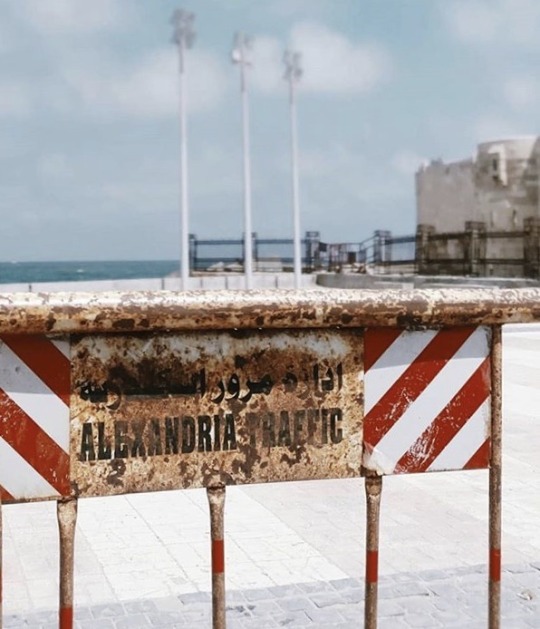
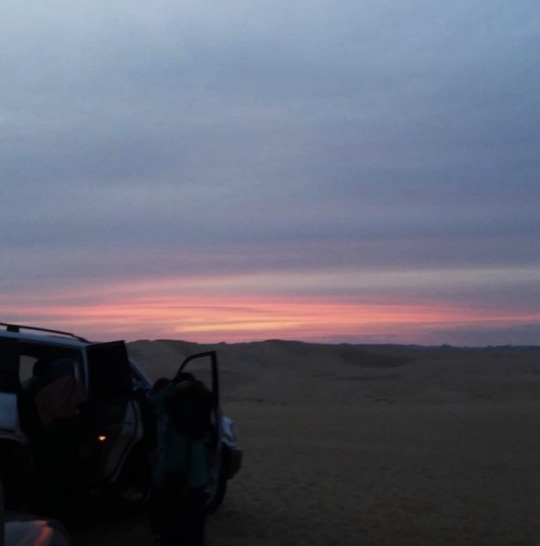
(waktu lagi offroad di Siwa! foto ini diambil waktu buru-buru udah disuruh masuk mobil karena mau balik)
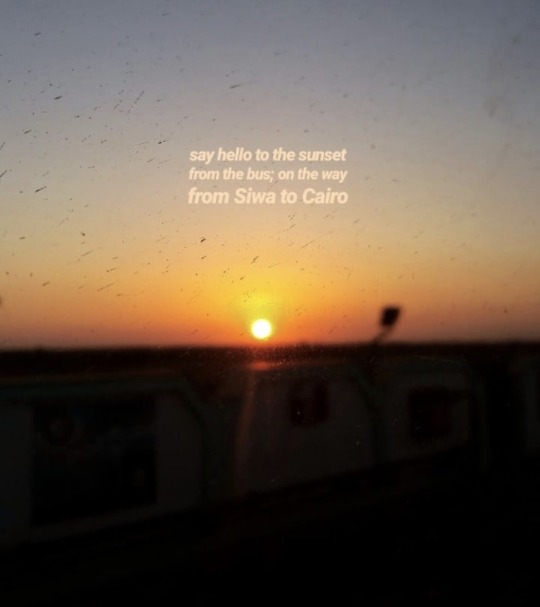
(foto terakhir yang akan kutaruh di sini. perjalanan pulang dari Siwa, difoto dari bus waktu lagi berhenti di suatu tempat)
dan sekian, Mesir, 2018.
ternyata lama juga, udah jam 00.22. jadi, selamat malam dan selamat istirahat!
2 notes
·
View notes
Text
My First K-Drama
Ceritanya, aku bosen skripsian... HAHAHAHAHA... dan aku nemu semacem “30 day k-drama challenge” gitu di twitter dan pengen nyoba ikutan bikin (semoga selesai beneran 30 hari ya). Wkwkwk..
Udah dari lama pengen ikutan sejenis #30haribercerita gitu, dan ini sejenis gitu kan, malah lebih spesifik, jadi kayaknya lebih cocok sama aku. haha.
Okey, let’s get it started.
My first k-drama is, Jewel in The Place.

Pas tahun... 2006? 2005? Gak tau lah itu kapan.. Pokoknya aku masih SD, sekitar kelas 4 atau 5 an gitu lah.. Inget banget dulu setiap abis ngaji di TPA, aku dan temen-temenku lari cepet ke rumah udah kayak apaan tau biar gak ketinggalan ceritanya.
Dan yang nonton tuh beneran ibu sama bibi aku.. Mereka kan emang sehari-hari masak kan ya, jadi kayak relate banget gitu loh, sama cerita Dae Jang Geum ini. Kayak yang tips (ceilah, tips) kecap (?) di kendi tanah liat yang dikubur itu ceunah meningkatkan cita rasa si kecap itu... Ibu dan bibiku mengangguk-angguk setuju, sambil dengan semangat cerita keluarga di sambas (entah siapa, aing gak kenal) juga ngelakuin hal yang sama, dan rasa kecapnya beneran jadi beda dan lebih enak.
Dan ayahku yang tiap sore juga jadinya gak bosen ngomong “korea teroooosss”
Itu salah dua episode terkait drama ini. Wkwkwk
Hal lain yang legend dari drama ini adalah lagunya. Semua yang terjebak ke dunia kekoreaan kayaknya pasti tau lagu ONARAAAA OONARA nya itu.
I MEAN, THIS LEGEND REALLY IN ANOTHER LEVEL!!!!
Walaupun pas di episode 30 kesananya, gak tau kenapa lagunya diremix berisik gaje gitu.. Merusak estetika banget dah, padahal yang aslinya bagus banget.
Yang aku inget juga adalah, karakter nya tuh keren-keren.. dipikir-pikir lagi juga, hero drama ini keren banget sampe titik dimana aku jadiin hero disini standar buat hero kece gitu.. wkwkwk.. Mana ceritanya sampe punya anak segala kan. Haaaahh, drama korea jadul emang itu serunya, lu bisa tau ceritanya ampe jauh. Well, wajar sih.. wong ada 60 episode an (kalo gak salah, lupa aku..)
Dan karakter Dae Jang Geum yang strong banget itu membekas banget. Jang Geum tuh bukan karakter cewek menye-menye gitu.. She is so bright, strong-willed, hard-working and kindhearted. Aku juga suka meet-cute nya ayah-ibunya Jang Geum, dan meet-cute nya Jang Geum dan mas-mas hero nya itu (lupa namanya, haha). Yah, pokoknya itulah ya..
Dipikir-pikir lagi sekarang, Korea Selatan marketing nya jago amat ya. Drama ini tuh kalo gak salah adalah drama pioneer nya hallyu deh (selain winter sonata, ya). Ngejual pariwisata negara lewat makanan. Manusia mana yang nolak makanan coba. Apalagi makanan enak. Beuuh.... liat di drama aja kayak enak banget kan, pasti lebih enak kalo ngerasain sendiri. Which is, kalo lo mau ngerasain, ya lo kudu ke korea dulu. Wkwkwk
Sampe sekarang promo makanan korea (alias hanshik) masih sering dilakukan jagat perdrakoran. Mantep kan. Marketing emang harus jalan terus.
Aku tenggelem beneran ke dunia kekoreaan tuh lewat jalur Idol sebenernya, wkwkwk.. tahun 2009 an.. Udah sepuluh tahun an loh, mantap kan. (gak ada yang nanya, roh, JEBAL) hahahaha.. Sampai ketemu di postingan selanjutnyaaa~
3 notes
·
View notes
Text
Iman Usman’s Secret Sauce and Some Lessons You Need to Remember
Assalamualaikum. Halo teman-teman!
Untuk yang pertama kali datang ke Tumblr ini, selamat datang!
Sebenarnya Tumblr ini udah lama banget dibikin, sejak saya SMP (sekarang saya semester 6) tapi sayangnya saya nggak cukup pede untuk menulis.
Itu dulu.
Sekarang, kalau dipikir pede atau nggak, tetep aja nggak pede-pede amat, tapi kalau ditimbang manfaat dan mudharatnya, sepertinya akan lebih bermanfaat kalau saya beranikan diri untuk mulai rajin menulis karena ada banyak hal yang penting untuk diketahui oleh teman-teman, dan saya nggak pengen ilmunya berhenti di saya aja. Jadi, kalau kalian baca ini dan merasa ada manfaatnya, tolong sampaikan ke teman-teman yang lain ya apa yang kalian dapat, Insyaa Allah berkah :)
So, let’s start!
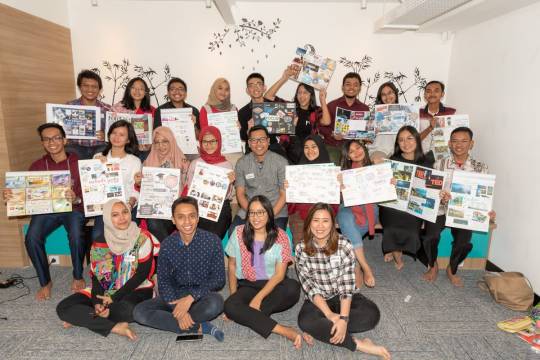
Alhamdulillah. Kemarin Sabtu, 30 Maret 2019 saya berkesempatan menghadiri Inauguration Day penerima #beasiswaimanusman bersama 16 orang lainnya. Seperti inauguration day pada umumnya, agenda kemarin adalah seputar deep introduction tentang program ini dan profil diri kita masing-masing (awardee + Kak Iman himself!)
Untuk yang belum tau kak Iman, beliau adalah co-Founder Ruangguru, bimbel online nomor satu di Indonesia. Kesan pertama yang saya dapat waktu beliau masuk ruangan adalah, “Ini orang panutan banget. Agenda mulai jam 9 tapi beliau udah hadir jam 9 kurang”—hal yang cukup jarang saya jumpai pada orang dengan jadwal yang super sibuk. Ga berhenti di situ aja, kekaguman saya bertambah waktu disetelin video profilnya Kak Iman. (kalian bisa nonton di sini)
Yang saya tangkap saat itu adalah, ada proses panjang dan nilai hidup yang begitu kuat sehingga Kak Iman bisa sampai di titik ini. Kak Iman merasa pendidikan adalah hal yang membawa perubahan dalam hidupnya, yang berhasil membuatnya melampaui segala batasan yang ada. Oleh karena itu, beliau punya impian agar lebih banyak anak Indonesia yang bisa merasakan hal yang sama. Melalui Ruangguru, Kak Iman berusaha merealisasikan mimpinya itu.
Keren kan? Banget!
Sekarang pertanyaannya, apa aja sih kunci suksesnya Kak Iman sampe bisa merealisasikan impiannya?
1. Ketika suka sesuatu, kasih semua hati dan jiwa kita. Jangan setengah-setengah!
Kak Iman cerita, dulu jaman SMP suka banget sama Harry Potter. Saking sukanya, beliau sampe ikut semacam “Hogwarts online” gitu! Tapi, karena nggak ada internet di rumah, akhirnya Kak Iman bela-belain ke warnet hampir tiap hari, cuma untuk ngelanjutin “sekolah online”nya itu. Karena ketekunannya, Kak Iman akhirnya berhasil wisuda daaan puncaknya adalah beliau bahkan jadi Professor di sekolah online itu loh! Lanjut dari situ, Kak Iman jadi terinspirasi untuk buka bisnis online, jualan pernak-pernik ala Harry Potter. Usahanya sukses, bahkan pernah sekali waktu dapet orderan jubah untuk keluarga besar yang berasal dari Jakarta.
Ini cuma cuplikan yang bisa nggambarin betapa “total”nya Kak Iman ini dalam berusaha. Bahkan untuk hal-hal yang mungkin orang lain anggap sepele. Totalitas akan membawa kita pada kesuksesan, di bidang apapun itu.
2. Challenge the Status Quo
Banyak pencapaian dalam hidup Kak Iman yang sebenarnya hasil dari “ketidakmungkinan”. Salah satunya waktu Kak Iman mengikuti pemilihan Duta Muda Asean. Saat itu persyaratannya mengharuskan peserta sudah berkuliah, sementara saat itu status Kak Iman masih siswa kelas 3 SMA yang baru keterima PPKB di HI UI (semacam SNMPTN kalo sekarang). Tapi, Kak Iman gak kalah sebelum perang. Beliau tetap daftar, meskipun panitia bilang beliau gak bakal bisa. Hasilnya? Dengan segala kerja keras dan kegigihan Kak Iman, beliau membuktikan bahwa dirinya pantas hingga akhirnya lolos sebagai Top 10 dalam pemilihan tersebut, and of course, sebagai peserta termuda!
Seringkali kita ini kalah sebelum perang, belum mencoba udah nyerah duluan. Hal kayak gini ini yang perlu kita ubah. Lebih baik mencoba daripada tidak sama sekali. Kita nggak akan tahu kalo gak pernah mencoba. Pun kalau kita gagal, sesungguhnya kita udah dapet pelajaran dari prosesnya, dan itulah hal yang paling berharga.
3. Build and Mantain Relationship
Orang sering bilang, punya relasi itu penting banget. Tapi, kalo kata Kak Iman, punya relasi aja gak cukup! Kita harus punya meaningful relationship. Waktu kenalan sama orang, stop berorientasi dengan kepentingan pribadi kayak, “Wah ni orang bisa jadi bantu gue tar kalo gue butuh”, tapi bangunlah relasi yang emang bener-bener dari hati. Ketika ada waktu, sempatkan diri untuk catch up dengan teman-teman kita, bantu yang kita bisa. Dulu waktu ikut YLI (Young Leaders of Indonesia), kak Iman kenalan sama kak Belva Devara pertama kali. Gaada pikiran apapun waktu itu, hingga akhirnya beberapa tahun dari situ mereka berdua bekerja sama membangun Ruangguru. See? Meaningful relationship is much more important than just a relationship.
4. Stay True to Yourself, to Your Calling
Kak Iman percaya bahwa true calling nya adalah empower others. Value ini dia bawa dari kecil. Bikin perpustakaan mini untuk anak-anak di daerahnya, mendirikan organisasi Indonesian Future Leaders semasa kuliah, hingga mendirikan Ruangguru, semua adalah bukti bahwa kak Iman fokus pada true calling nya.
Saya pribadi percaya, Tuhan tuh menciptakan kita semua, mengizinkan kita lahir di dunia ini pasti ada “misi”nya masing-masing. Tugas kita adalah mendengarkan hati nurani kita dan fokus untuk menjalankan misi itu dengan sebaik-baiknya. Mungkin ada teman-teman yang misinya berkarya di bidang seni, olahraga, politik, penelitian, dan lain-lain, yaudah fokus di situ. Tuntaskan misi kita masing-masing. Tapi, pertanyaan yang sering muncul adalah, “aku belum tau misiku apa, gimana carinya?”
Menurut saya, it’s totally okay to explore many things. Mumpung masih muda, galilah sebanyak-banyaknya pengalaman. Yang penting tetep inget batasan, tau kapan harus berhenti dan menyimpulkan akan fokus ke mana. Jangan cuma jadi oportunis yang nyobain semua hal, tapi ngga tau arah dan tujuannya mau kemana.
Yup, itu 4 “rahasia” Kak Iman yang saya pelajari di pertemuan pertama ini. Semoga bisa bermanfaat dan jadi bahan refleksi kita bersama yaa!
“Sesungguhnya Allah tidak akan mengubah nasib suatu kaum kecuali kaum itu sendiri yang mengubah apa-apa yang ada pada diri mereka” (QS 13:11)
16 notes
·
View notes
Text
22 April 2019
Hello. 30 days writing challenge gue gagal bok wkwkwk. gue baru nulis sampe tulisan ke 8 dan cuma gue post privately karena lagi lagi nggak selesai nulisnya.
Ada hal yang terjadi hari ini, beda dari hari-hari biasanya. Sebenernya sejak hari kamis atau jumat kemaren gue lupa, gue kan udah berencana untuk mulai running variabel, ternyata setelah diganti gelas reaktornya, pengaduknya yang bermasalah akhirnya harus diulang lagi dong. Sumpah ya rencana gue sejak hari kamis-minggu itu gue running sehari 2 variabel, dan terkendala pengaduknya yang tiba-tiba berhenti itu, sampe sekarang gue masih running 2 variabel yang udah diulang 2x which is gue udh running 4x dan itu harus diulang lagi. I know skripsi itu susah. Kek pengen sambat banget gitu tapi gue sadar juga sambat nggak menyelesaikan apapun kecuali lebih melegakan diri sendiri. Yaudah gue cuma menghela napas sampai hari ini. Besok adalah jadwal gue untuk running lagi dengan pengaduk yang sama tapi dengan persen starch yang gue gunakan, diturunin jadi 5%.
Seriously gue ga tau gimana dah itu apa boleh atau harus saklek dengan metode mbak trias. Dan hari ini pukul 1.30 pm disuruh progress. Pas progress tersebut, tim gue dibilang belum konsisten dengan percobaan2 yang udah kami lakukan. kita tuh sebenernya bingung yak. memang sintesa kata orang-orang itu susah, dan gue sendiri juga ga tau berhasilnya variabel kita itu pas kapan, apakah kapasitas penyerapannya tinggi, atau pas grafting berhasil, atau pas hasilnya gimana gue gak ngerti. karena sintesa itu susah, sedikit ada perubahan kondisi operasi, hasilnya juga berubah. Nah percobaan gue itu udah sesuai dengan prosedur, cara masukin bahan, cara ngatur suhunya, dan lain-lain. dan hasilnya juga sebenernya sama aja, nge-gel, kalo dicuci hasilnya juga kaya gitu samanya, cuman ketika kita ganti reaktor yang diameternya lebih kecil, gelnya itu lebih keras. kita pake reaktor baru itu baru melakukan 2 variabel, pake reaktor yang lama juga masih 2 variabel walaupun kita udah berkali-kali trial. Gue sedikit sebal ketika dosen 1 bilang “kalian itu trialnya kurang banyak”, sedangkan dosen 2 bilang “kalian jangan kebanyakan trial, harus ngirit bahan, atau kalo engga kalian bikin 1/2 resep sampel”. ketika gue sama temen gue pake setengah sampel, entah kenapa suhunya nggak bisa maksimal. selalu stuck 91 padahal yang dibutuhin 95. daaaan kita juga nyoba tuh yang 5% starch, pertama kali ngerun, bagus banget hasilnya, cuman ketika kita running kedua dst hasilnya sangat encherrrrrrrrrr. dan hasil yang bagus ini, ternyata saat dianalisa FTIR, kata dosen pencuciannya nggak sempurna, sedangkan yang hasilnya kecil itu nggak dikomentarin, gatau ini beliau bilang berhasil atau engga, but i think hasilnya analisanya lebih bagus daripada kapasitas penyerapannya yang tinggi. duh sorry bahasa gue...
kayanya kita emang perlu analisa ftir sih biar tau kaya gimana graftingnya. dan kami juga perlu nyari alasan nih kenapa hasil kita nggak lebih bagus dari hasil penelitian sebelumnya, kita juga gabisa ngasih alasan yang sama dengan penelitian sebelumnya, which is selain ngebut ngerun, kita juga perlu ngebut nyari jurnal buat alasan hasilnya.
ohya pas progress tadi, gue sama temen gue kan dibilang inkonsisten, ya emang sih kita mengakui karena berbagai kendala kaya tadi, pengaduknya tiba2 berhenti lah, hasilnya beda-beda lah, dan lain2. kita juga mengakui bahwa kita kurang mengefisienkan waktu. gue sebenernya mau banget bisa ngerun sehari 3x hahahah tp gila sih sekali run 7 jam which is sehari menghabiskan waktu 21 jam buat running. sebenernya kalo running doang mah bisa cepet, cuman buat alasan dan nanti hasinya gimana itu, yang bikin lama. terus gue sama temen gue tadi juga dibilang kurang kerja keras dibanding dengan salah satu tim yang berisikan mahasiswa s2 dan s3. idk somehow karena gue memang mengakui kalo gue dan tim gue memang begitu, gue ga masalah dengan omongan dosen yang membandingkan kami dengan tim sebelah. tiba tiba malem tadi salah satu anggota tim yang dibandingin sama tim kami tadi minta maaf dong. beliau bilang sebenernya kami juga kerja keras, cuman mungkin ga keliatan aja di mata dosen wkwkwk asli deh sebenernya gue gapapa loh. ya walaupun tim sebelah memang belum running, masih trial2 juga, tp mereka membuahkan hasil analisa trial dan bisa menjelaskan hasil analisa tersebut, sedangkan gue sudah menghabiskan 625k untuk analisa 4 sampel, dan gabisa menjelaskan gimana hasil trial tersebut, terutama SEM. kita analisa juga cuman mengejar minggu depan sudah pendaftaran poster. gue pengen mengelus dada.
so i think analisa kami ga dipake semua. mungkin kedepan kita bakal analisa ftir lagi dengan variabel yang starch 10% dan 5%. Gue takut banget sebenernya kalo hasilnya sama aja dengan percobaan sebelumnya, nggak signifikan gitu loh perubahannya. gue merasa bahwa kami kudu banget dapet kapasitas penyerapan yang lebih banyak dari sebelumnya.
rrrrrrr mulai stress :(
1 note
·
View note
Link
The human body is an exquisite specimen of an intricate, functioning quantum mechanism that has evolved successful interfaces to decode and utilize quantum inputs from the environment. But what happens when the primary interface is challenged by a sudden change in quantum inputs?
Vitamin C is probably one of the most well-known nutrients. Abundantly found in fruits and most vegetables, vitamin C confer myriads of health benefits, the most famous being its antioxidant, free radical scavenging attributes. Today, I will take you on a unique journey to discover the real role ascorbic acid plays in our bodies at the quantum level.
Ascorbate is Ubiquitous in all Eukaryotes
Ascorbate, also referred to as L-ascorbic acid or vitamin C, is essential for all eukaryoticalgae, plants and animals, but not for prokaryotic bacteria. All photosynthetic plants synthesize ascorbate, while some animals, including primates, cannot synthesize ascorbate due to the loss of a terminal enzyme in the GULO pathway that is responsible for the conversion of ascorbate from glucose. [1]
In the beginning, all eukaryotes used the GULO (l-gulonolactone oxidase) pathway for ascorbate biosynthesis. As time passed, photosynthetic organisms whose biological activities are solely dependent upon light for the conversion of light energy into chemical energy, evolved a more efficient GLDH (l-galactonolactone dehydrogenase) pathway that uncoupled hydrogen peroxide generation during ascorbate biosynthesis. [2] Ascorbate auxotrophs, unable to synthesize ascorbic acid, must obtain this essential nutrient from their diet. Primates and guinea pigs get their ascorbate from land plants; bats’ sources are land plants, insects and blood; whereas marine animals like teleost fish and crustaceans obtain their ascorbate from zooplankton and phytoplanktons. [1]
There are many speculations as to why ascorbate auxotrophs lost the ability to synthesize ascorbate. Some believed the successful evolution of the GLDH pathway in photosynthetic plants provided ample and constant supply of ascorbate. Primates in the wild that are unable to synthesize ascorbates consume high amounts of ascorbate. For example, gorillas (Gorilla gorilla) consume 20-30 mg/kg/day, howler monkeys (Alouatta palliata) consume 88 mg/kg/day, and spider monkeys (Ateles geoffroyi) consume 106 mg/kg/day. At that amount, it is equivalent to 8.46 g for a human weighing 80 kg! [27]. Others believed that a reduction in the "cost" of production, which is the generation of the reactive oxygen species, H2O2, balanced out the lost of production capability. [3] I believe there is another reason why a required nutrient in humans is not synthesized by our bodies because the role of ascorbate extends far beyond its redox capacities. It is also the same reason why prokaryotes do not synthesize ascorbate. Light.
Prokaryotes are Light Emitters
All living organisms release biophotons. Humans, animals and plants emit ultra-weak biophotons at intensities between 10 to 100 photons/cm2 /sec wavelengths between 200 nm and 800 nm. Prokaryotic bacteria emit over 1000 photons/cm2 /sec. The intensity is dramatically increased during their growth phase. It is well known that bacteria use quorum sensing communication signals to regulate their physiological activities, including symbiosis, virulence, conjugation, motility, sporulation, and biofilm formation. [4] One of these communication signals used by quorum sensing microbes is electromagnetic radiation in the visible (400–750 nm) and near-infrared (750–2500 nm) regions. [5] So what happens when you add ascorbate to quorum sensing bacteria like Escherichia coli or Klebsiella pneumoniae that uses light for cell to cell communication? Death is the result. [6] The ability of ascorbate to inhibit growth, sporulation and enterotoxin production is due to its anti-quorum sensing ability. [7] How does ascorbate disrupt quorum sensing?
Birefringence, Depolarization and Quantum Decoherence
Vitamin C, or ascorbate, is a birefringent molecule that is optically active.[7, 8] The word birefringence comes from the Latin ‘bi’ meaning ‘twice’, and ‘refringere’ meaning ‘to break up’. Birefringent and optically active materials are anisotropic, where the index of refraction varies with polarization direction. This quality is the exact opposite of isotropic materials like glass, liquids and amorphous mediums where direction of polarization does not matter. When a ray of light enters a birefringent material like calcium carbonate or ascorbate, it will be broken up into two rays going in different directions and velocities upon exit. That is why when you look through a birefringent crystal, you will see double. [9] After light passes through a birefringent medium, it will also be depolarized, meaning there is a reduction or even a complete loss of polarization. [10]
Can Light from the Sun be Depolarized?
We all know light from the sun is unpolarized. What exactly does the term ‘unpolarized’ mean?
The atoms on the surface of a heated surface generates light and these atoms act independently of one another. The electromagnetic waves emanating from the heated surface will each have its own polarization direction. The sum of these random orientations result in a wave whose direction of polarization changes rapidly and randomly. Such a wave is said to be unpolarized. Common sources of light, including the sun, incandescent, fluorescent lights, LEDs (Light Emitting Diodes), and flames, all produce unpolarized light. However, these unpolarized light often become partially polarized due to multiple scatterings and reflections. When sunlight passes through the Earth’s atmosphere, it is scattered by air molecules, rendering the light that reaches the ground partially linearly polarized. The reason the sky looks blue is because the blue spectrum being at a higher frequency, is scattered more by air molecules. [11] So one can say that due to the scattering effects, all light that passes through a birefringent medium will be depolarized upon exit to a certain extent.
Photons & Quantum Decoherence
Photons carry information. How much information is carried depends on whether you believe in a holographic, fractal universe.
Quantum information is commonly encoded in the polarization of single photons. When light passes through birefringent mediums, the depolarization of the photons is equivalent to the decoherence of the quantum information they encode. Depolarization of such photons acts as quantum noise on the stored information. [12] Quantum decoherence has been proven to be equivalent to the classical depolarization experienced by light. [13] Decoherence is regarded as a loss of information into the environment, [14]and decoherence can also degrade or terminate entanglement. [15]
Is it becoming clearer to you why quorum sensing prokaryotic bacteria do not synthesize ascorbate? Ascorbate is birefringent. The light used by bacteria for cell to cell communication will be depolarized and rendered decoherent by ascorbate. That is how ascorbate disrupts quorum sensing in prokaryotic bacteria. [7] How important is electromagnetic radiation (EMR) depolarization in the human body? I believe EMR depolarization is critical for maintaining optimum health, especially when you consider the fact that 33% of all the protein in the human body is collagen, and collagen is also birefringent!
Birefringence & Depolarization are Tissue Health Indicators
As early as 1975, birefringence or the ability to depolarize light, was already used to differentiate the state of health of underlying tissues being examined. In general, healthy tissues are more birefringent, whereas diseased or necrotic tissues display little to no birefringence, depending on the nature and degree of damage. When tendons were stressed in forced training exercises, the birefringence and the resistance to tear were both decreased. As tendons became completely detached due to stress, birefringence was completely lost. [16] Tissue birefringence is dependent on collagen fiber organisation and orientation. In osteoarthritis, the loss of birefringence is linked with the early stages of cartilage degeneration. The greater degree of loss in birefringence, the greater the increase in cartilage degeneration. [37]
Today, information about tissue structure can be extracted from how light is depolarized as it passes through the tissue being examined. The pathology of a tissue is correlated to the decrease of birefringence in the tissue. For example, myocardial infarction results in a decrease in the birefringence signals generated in the area of infarction, due to disorganization of collagen fibers formed in scar tissues [17]. This decrease in birefringence in unhealthy, damaged tissues, and the subsequent reduction in depolarization of light, can also be detected as an increase in biophoton emissions. In plants, unhealthy or injured areas display higher biophoton emission than healthy, uninjured areas. [18] In humans, cancerous cells emitted higher intensity of photons than non-cancerous cells mostly in the ultraviolet and blue wavelengths (370 nm, 420 nm, 500 nm), whereas non-cancerous, healthy cells emitted more biophotons than cancer cells in the infrared range (620 nm, 950 nm). [19]
Collagen Birefringence and Infrared Light
Healthy non-cancerous cells emit more biophotons in the infrared frequencies, yet contrary to unhealthy, necrotic cells that displayed reduced birefringence, these healthy tissues still exhibit strong birefringence and large degrees of depolarization. Why do healthy cells emit infrared range biophotons and still remain birefringent? Because infrared light has been proven and demonstrated to induce birefringence [20], and higher birefringence is associated with healthy tissues. In the regeneration of third degree burns in the skin of mice, areas treated with 632.8 nm low intensity laser showed higher birefringence than non-treated control areas in the same subjects. [21] The degree of depolarization is also dependent upon frequency of wavelengths. Pig skin, similar to human skin, is strongly birefringent. The degree of depolarization is strongest at longer infrared wavelengths, and decreases as wavelength is shortened. When pig skin is damaged by gamma ray irradiation, the ability of the skin to depolarize light (tested at 450 nm to 675 nm) is further reduced. [22]
The triple helix structure of collagen makes it optically birefringent. This birefringence is ubiquitous in all biological tissues. [23] However, the ability to depolarize light is dependent upon various factors, the most important one being the depth or thickness of the tissue involved. [24]
Infrared wavelengths between 600 and 1500 nm can penetrate up to 5 mm on the human skin, which would be slightly below the dermis. Whereas light waves in the ultraviolet frequencies generally do not penetrate beyond the epidermis of, or under 1 mm in tissues. [22] The ability of collagen to depolarize light at shorter wavelengths is affected by how the collagen fibers are aligned and limited by the depth of the tissues probed. Due to this limitation, collagen on its own is not the ideal primary interface with quantum signals from our environment. But combined with ascorbate, or vitamin C, nature has created the perfect quantum interface for eukaryotes.
Collagen & Ascorbate, an Exquisite Entanglement
Collagen cannot be synthesized without ascorbate. Collagen requires ascorbate for hydroxylation, a process that allows the molecules to achieve the best configuration, rendering structural stability to the collagen fibers, making them stronger and less susceptible to damage. When human skin cultures are exposed to ascorbate, collagen synthesis is increased by eightfold with no increase in other proteins. In human skin, collagen accounts for up to 75% of the weight of the dermis which is below the epidermis where infrared frequencies can penetrate. [23] Even though the concentration of collagen is lower in the epidermis, this is the very layer of our skin where the highest concentration of ascorbate is found, and the epidermis is also where ultraviolet wavelengths can penetrate.
Normal skin contains high quantities of ascorbate, well above plasma levels and comparable to other body tissues. The concentration in the epidermis is between 2 to 5-fold higherthan that found in the dermis. Ascorbate is found to be depleted in aged or photodamaged skin, and skin that has been exposed to pollution or irradiation. [26] Is this depletion of ascorbate in the epidermis cause or effect? To answer that question, first we need to understand why there is so much ascorbate in the epidermis.
Ascorbate is a Quantum Workhorse
The sodium-dependent vitamin C transporter 2, or SVCT2 for ascorbate is found in every cell of the human body, even in mitochondria. [74] This transporter is one of the most evolutionarily conserved molecules and no species lacks this key protein. [28] The SVCT2 transporter will pick up and transport ascorbate even when the concentration available is extremely low (high affinity), in contrast to the SVCT1 ascorbate transporter, which is high capacity, but low affinity. [74] Together, these two transporters with different capacities and affinities ensure adequate ascorbate levels in all cells in the body. The knockout of the SVCT2 high affinity transporter in mice is lethal on day 1 of life, and when the SVCT1 transporter is deleted, half of the mice without the SVCT1 transporter do not survive to weaning. [36] Most of the time cells have only one form of the transporters. In the epidermis, both forms of the transporters are expressed. [26] Why does nature want to make sure there is more than adequate ascorbate in the epidermis?
Science has been relentlessly uncovering the endless roles undertaken by the epidermis in critical biological functions. It is well established that the skin is the largest organ of the body, with neural, endocrine and immune functions that regulate local and global homeostasis of the various systems involved. [29] Just recently (October 2018), circadian clocks stronger than those in the blood have been identified in the human epidermis. [30]
Ascorbate, the Primary Quantum Interface
Ascorbate is birefringent. It will depolarize light and render the incoming photons decoherent. You can think of ascorbate as the first interface where incoming photon signals are being decoded before secondary interfaces receive and act upon those quantum signals. How does quantum biology interpret the properties of ascorbate? So far, ascorbate has been associated with three quantum properties. It is able to absorb UV-B photons and suppress fluorescence (or fluorescence quenching) of radiation below roughly 310 nm. The absorption maximum of ascorbate is below 270 nm, with some studies showing a peak at 220 nm. Ascorbate is also able to lower excitation signals and transform short UV-B wavelengths between 280 nm to 320 nm into longer UV-A radiation in the 320 nm to 400 nm range. With fluorescence quenching ascorbate is able to substantially reduce emissions to the UV-A range of between 320 nm to 400 nm. These mechanisms effectively shift high-energy light waves into longer wavelengths emitting lower energies. [31] These quantum effects exert immeasurable influence on all aspects of essential biological functions, most of which begin in the epidermis of our skin.
Ascorbate and Vitamin D Synthesis
The epidermis is an active site for hormone synthesis, the most important and well known is that of Vitamin D. It is well established that upon exposure to UVB radiation, the sterol 7-dehydrocholesterol (7-DHC) is converted to pre-vitamin D3, which then is isomerized into vitamin D3. The biologically inert vitamin D3 then enters circulation and undergoes two successive hydroxylations in the liver and kidney to form the hormonally active metabolite calcitriol. [32]
The highest concentration of the sterol 7-DHC is found in the deepest two layers of the epidermis, the stratum spinosum and the stratum basale. These two layers also have the highest capacity for the conversion of 7-DHC into pre-vitamin D3. [33] The epidermis consists mostly of keratinocytes, and the bottom layer, stratum basale, is also where keratinocytes and melanocytes are formed. Ascorbate is highly concentrated in all layers of the epidermis. However, concentration of ascorbate has actually been found to increase with depth in the uppermost layer, the stratum corneum. [26] The stratum corneum is ABOVE the stratum spinosum and the stratum basale where 7-DHC is concentrated. So why is there such a high requirement for ascorbate in the epidermis that it expresses both forms of the SVCT transporters?
The sterol 7-DHC, precursor to vitamin D3, is extremely reactive to chain oxidationwhen exposed to exogenous radicals and oxygen. Oxysterols formed from the free radical chain oxidation of 7-DHC are cytotoxic. [33] Cholesterol and most oxysterols are excited by ultraviolet wavelengths below 200 nm. Ascorbate’s unique quantum ability to absorb UV-B and UV-C frequencies, and also to transform high energy short UV wavelengths into longer less energetic wavelengths is critical for metabolic processes in keratinocytes. [31] Why?
Keratinocytes Metabolize Calcitriol
Keratinocytes contain the entire metabolic pathway for the conversion of vitamin D3 to its active metabolite calcitriol, 1,25(OH)2D3, via the vitamin D-25 hydroxylase (CYP27A) and the 25OHD-1α-hydroxylase (CYP27B1). These are the same genes found in the liver and kidney that are responsible for the hydroxylation of vitamin D3 and its conversion into the active form calcitriol. In fact, the expression of CYP27B1 is HIGHER in keratinocytes than in any other cell in the body, including the cells of the proximal renal tubule in the kidney. CYP27B1 expression is the highest in the stratum basale of the epidermis in vivo. [34] The conversion of the highly reactive 7-DHC to calcitriol in keratinocytes is only activated in the presence of ultraviolet radiation in the ranges of 285 nm to 315 nm. [35] It is therefore reasonable to assume that the presence of the ascorbate as quantum interface would ensure minimal reactive chain oxidation by 7-DHC during the conversion processes.
In addition to negative feedback loops in keratinocytes, ascorbate also controls the level of calcitriol that can enter into circulation when the production by the liver and kidney is intact. [34] Acorbate not only has the ability to modulate the differentiation of keratinocytes [26], it is able to control the level of calcitriol production in keratinocytes via its effects on melanin synthesis.
L-DOPA, Melanin & Ascorbate
Melanin are chromophores that inhibit the conversion of 7-DHC by competing for the absorption of UV-B photons. An increase in melanin in human skin will increase the time required for exposure to UV radiation in the formation of pre-vitamin D3. [32]
Melanin is produced by melanocytes in the stratum basale, the last layer of the epidermis. Melanin is synthesized from its precursor L-tyrosine, with the aid of enzymatic reactions by tyrosinase. [38] Human keratinocytes have been demonstrated to synthesize catecholamines from L-tyrosine, and the human epidermis actually has the capacity for TOTAL catecholamine biosynthesis. Scientists have identified in keratinocytes, all the key enzymes for catecholamine synthesis including tyrosine hydroxylase, the rate limiting enzyme in the conversion of tyrosine into L-DOPA which is the important precursor to neurotransmitters like dopamine and norepinephrine. [39, 40] When L-DOPA is oxidized, melanin is formed. [41]
Ascorbate controls the formation of melanin by inhibiting the oxidation of L-DOPA. The presence of ascorbate can also increase the amount of L-DOPA synthesized by tyrosine in the presence or absence of UV-B irradiation. However, the amount of L-DOPA synthesized in the dark in the presence of ascorbate after exposure to ultraviolet is markedly higher than non-exposure to ultraviolet. Most importantly, ascorbate has the ability to reduce melanin. [42] The reduction of melanin is an area that is underexplored, but it has huge implications, considering fungi can use melanin to convert radiation into chemical energy.
Radiosynthesis & Ascorbate
Many eukaryotic fungal species produce melanin chromophores. These species have been found to be able to thrive in high-radiation environments, including the damaged nuclear reactor at Chernobyl. Melanin has the known capacity to absorb a wide spectrum of electromagnetic radiation and transduce these radiation into biologically useful energy. This phenomenon of radiation induced growth is called radiosynthesis. [43] The ability to transform radiation into electrical energy in fungi is substantially enhanced in the presence of ascorbate, or vitamin C. The oxidation of melanin as a result of irradiation produces electric current. The ability of ascorbate to reduce melanin through the transfer of electrons optimizes the redox capacity of melanin, resulting in enhanced electrical current synthesis. [44] Imagine a future world where humans have the capacity to turn electromagnetic radiation from natural and artificial sources into biologically useful energy by using our melanin biosynthetic pathways! But don’t get too excited over this prospect. Humans are ascorbate auxotrophs, meaning they are eukaryotes who have lost the ability to synthesize ascorbate. As such, our melanin biosynthetic pathways are different from that of fungi and far from perfect.
Melanoma, Melanin & Ascorbate
Melanoma is a dangerous form of skin cancer. The irradiation of melanin by ultraviolet rays has been shown to enhance free radical formation. Although melanin is protective at longer wavelengths, melanin enhances cell damage by radiation at shorter wavelengths. The induction of melanoma by ultraviolet A in the range between 320-400 nm requires the presence of melanin pigment, and is associated with oxidative DNA damage in melanocytes. On the other hand, no pigmentation is involved in the initiation of melanoma by ultraviolet B radiation in the range between 280-320 nm. This perhaps resolves the long standing conundrum why African albinos who have melanocytes but lack melanin, are highly susceptible to non-melanoma skin cancer, yet these same Africans are resistant to cutaneous malignant melanoma. [45] So how does the lack of ascorbate contribute to the melanoma-melanin equation? Why don’t we take a look at the difference between fish that can biosynthesize ascorbate and those that cannot.
Teleost are bony fish that have lost the ability to synthesize ascorbate. [46] Common examples of teleost are salmon, trout, cod, perch, herrings, catfish, carp, and minnows, to name a few. Teleosts produce melanin pigments and when exposed to high levels of ultraviolet radiation, these fish develop melanoma. The lesions on the skins of these fish with melanoma contained more melanin than in healthy cells. [47] Cartilaginous fish like hammerhead sharks, are able to biosynthesize ascorbate. [46] They too can ‘tan’ remarkably well under UV exposure. But unlike teleost fish, ascorbate producing sharks do not develop melanoma. “The juvenile shark's skin responded similarly to that observed in humans and other vertebrates in response to direct sunlight, turning from brown to black. Although a similar melanin response was seen in this study (i.e. increased melanin concentration), the sharks in this previous study showed no visible lesions or growths and were therefore not shown to contract melanomas or dermal carcinomas.” [47] The reduction of melanin by ascorbate in the skin of sharks could very well be the reason why sharks do not develop melanoma.
The epidermis is the first receptor of quantum signals from the environment. It makes perfect sense that ascorbate, the ultimate quantum interface, is found there in such high concentrations. The eye is the other important receptor for environmental quantum signals. How much birefringent ascorbate and collagen do you think can be found there?
Eye, Collagen and Ascorbate
The cornea has the highest concentration of ascorbate of all tissues in the body. As a primary quantum signal receptor for the body, the eye is where critical quantum entanglements are established. Quantum signals from light must be properly depolarized before they can be utilized by secondary biologic chromophore interfaces like melanopsin, melanin and hemoglobin. In humans, melanopsin is found in neurons in the retina, BEHIND the cornea. Before electromagnetic signals can reach chromophores and opsins like melanopsin, they are first depolarized by ascorbate and collagen in the cornea. The concentration of ascorbate in cornea is 14 times of that in the aqueous humor. The aqueous humor has 20 times the ascorbate in plasma. By this calculation, cornea would have about 300 times the amount of ascorbate when compared to plasma! The concentration of ascorbate in the corneal epithelium is perhaps the highest of any known and reported tissue in the human body. [48] It is interesting that of different animals examined, the highest concentration of ascorbate in the corneal epithelium are found in those diurnal species that encounter the highest environmental levels of ultraviolet radiation exposure. [48] And if this is not enough, don’t forget that collagen is also birefringent. The middle layer of the cornea is the stroma and accounts for nearly 90% of corneal thickness. The stroma is 71% collagen by dry weight, and contains three different types of collagen, [49] probably each with different birefringent qualities. How does the cornea get its ascorbate? Have you ever noticed that you may tear a lot when you are faced with strong sunlight? Tears also contain extremely high ascorbate, and it is believed that tears provide a continuous source of ascorbate for the corneal epithelium. [50]
It is without question that our high technology world is placing ever increasing demands on ascorbate availability. Humans can increase their ascorbate intake to keep up with demand, unlike plants and animals whose level of ascorbate biosynthesis may not keep pace with advances in technology.
Ascorbate in a 5G World
Human are unable to synthesize ascorbate. But our the ability to recycle certain amounts of ascorbate [51] combined with dietary intake allowed for optimal survival in environments that did not have excessive levels of artificial electromagnetic frequencies. Since the advent of technology, this ability to interface and depolarize ever-increasing electromagnetic frequencies began to decline exponentially in all eukaryotic plants and animals. For organisms that biosynthesize ascorbate, endogenous ascorbate production simply cannot keep up with the intensity of increasing radiation from man-made radio waves. For organisms that must obtain their ascorbate from diets, the decreased ascorbate levels in the food chain compounds the issue of deficiency.
A perfect example of this phenomena is the collapse of bee colonies as a result of increased electromagnetic frequencies. Increasing scientific evidence strongly support the theory of colony collapse disorder (CCD) among honey bees due to electromagnetic radiation from cell phones and cell towers. The massive amount of radiation produced by towers and mobile phones negatively affect honey bee behavior and biology. [52] Bee colonies are known to sustain a marked increase in loss rates during the winter as a result of decreased food sources that contain ascorbate. [53] Even though bees are able to biosynthesize ascorbate, the levels produced are obviously not enough to counter the effects of increased electromagnetic radiation that causes a significant reduction in endogenous antioxidants such as glutathione and catalase. The supplementation of ascorbate in diet of bees however, rescued colony loss rates during the winter by 33%, in parallel with increased antioxidant defense with elevated glutathione transferase and catalase activities. [54]
Birds on the other hand, appear to fare slightly better. Even though most birds do not synthesize ascorbate [46], breeding and migrating birds do not seem to be highly affected by electromagnetic radio waves.[55] Why? Feathers are made of keratin, and keratin is highly birefringent. [57] Feathers, therefore are able to depolarize electromagnetic radiation. The way birefringent feathers are arranged on the body of a bird is simply an exquisite display of nature at one of her better moments. [56]
How do plants protect themselves since they are exposed all the time to cosmic rays, irradiation from the sun and in the past half century, increased onslaught of electromagnetic frequencies in the form of artificial lights and Radiofrequency (RF) electromagnetic radiation (EMR) from a wide spectrum of radio waves? Plants, if you remember, have evolved a successful ascorbate biosynthetic pathway that does not generate reactive oxygen species. When exposed to varying levels of light intensities, plants usually respond by adjusting their ascorbate concentrations. [58] But the question remains, is the endogenous ascorbate production enough to counter the effects of EMR from cell towers? Trees grown in the direct vicinities of mobile phone base stations were found to show signs of damage that included stunted growth, brown leaves, irregular growth, dead branches, and color changes. Damage was usually the highest in locations with high radiation exposure and starts on the sides facing the source of radiofrequency radiation. Over time, the damage was extended to the entire plant. [59] A review of an extensive number of studies on the damaging effects of weak radio frequencies on plants showed mostly inhibition or reduced growth rates, whereas some studies actually did not find any negative response upon electromagnetic radiation (EMR) exposure. [60] How does EMR exposure reduce or inhibit growth in plants?
Ascorbate, Solar Energy Photoinhibition & Depolarization of Electromagnetic Radiation
Plants suffer reduced growth rates under photoinhibition when exposed to excessive solar irradiation. [61] Ascorbate provides photoinhibition protection to photosystem II in eukaryotic algae, plants, and prokaryotic cyanobacteria. Cyanobacteria do not use light for quorum sensing, instead they use acyl homoserine lactones (AHLs) as chemical signals in quorum sensing [62]. I propose the damage suffered by plants when exposed to EMR is a manifestation of reactions that are similar to solar irradiation induced photoinhibition. Both EMR and solar irradiation are electromagnetic frequencies, and both have been found to reduce photosynthetic capacities. Ascorbate attenuates photoinhibition by dissipating excess electrons and excitation energy via the water-water cycle in plants. [63] Ascorbate is now being viewed by science as indispensable for plant growth. [64] Ascorbate is birefringent. Birefringence causes depolarization. Electromagnetic radiation can be depolarized in the same way light is depolarized by birefringent mediums. When EMR undergoes depolarization, there is a redistribution of wave energy leading to a loss of the wave field energy. [65] Since radio waves can be depolarized, increased birefringence from ascorbate could very well protect plants that are affected by EMR exposure. Can ascorbate protect animals also?
Of Mice & Men, the Ascorbate Connection
In November 2018, the National Toxicology Program (NTP) released a report that demonstrated clear evidence that male rats exposed to high levels of radio frequency radiation (RFR) similar to that used in 2G and 3G cell phones developed cancerous heart tumors. The interesting part about this report is that although all rats received radiation across their entire bodies, female rats did NOT develop any tumor. In addition, longer lifespans were detected among MALE rats. [66] Are you intrigued? The explanation is really quite simple. It all has to do with how the birefringent, depolarizing ascorbate interfaces with the RFR on a quantum level in the male and female rats. In male rats, the level of ascorbate in heart muscle is low (5-10 mg per 100 g) when compared to the highest concentrations found in their adrenals (280-400 mg per 100g. If you will recall from the earlier section on birefringence and tissue health, lower birefringence equals less healthy tissues. In addition, the plasma content of ascorbate in male rats is an abysmal 1.6 mg per 100 g. At such low plasma ascorbate levels, very little ascorbate can be delivered to the epidermis to counter the high intensity radiation insults. [67] Female rats on the other hand, have extremely high levels of ascorbate in their plasma, ranging from 150 mg per 100 g to 165 mg per 100 g. [68] In comparison with ascorbate plasma level of male rats, that is a almost a 100-fold increase. With this level of circulating ascorbate in the plasma, the epidermis of the female rats should have more than adequate ascorbate to counter the effects of any amount of electromagnetic radiation. This is exactly what happened in the study. There was a complete absence of any tumor growth in the female rats treated with high intensity RFR. As for the inexplicable longevity observed in some male rats, the radiation exposure probably decreased ascorbate levels throughout the body. Decreased ascorbate is linked to the decrease in growth hormones [69 , 70], and a decrease in growth hormones has been linked to longevity [71].
The evidence for the birefringent ascorbate as the ultimate quantum interface certainly appears convincing. For those who may still be wondering, perhaps we should take a final look at how ascorbate relates to the one place where all quantum entanglements begin and end.
Mitochondria is an Ascorbate Hog
All eukaryotes have mitochondria. Mitochondria sustain life by providing energy. Being the final destination of all quantum interactions, it is no wonder ascorbate is found there in such high concentrations. However, judging by how mitochondria take in ascorbate, it is perhaps reasonable to assume that mitochondria are the first and last places where one would find ascorbate.
The study of mitochondria ascorbate uptake, regeneration and recycling is still an ongoing effort, with new ascorbate transporters, like the orphan transporter SVCT3, are being discovered. [72] The general consensus to date is that the high affinity SVCT2 transporter is used by mitochondria for uptake of ascorbate across all cells, tissues and species. More recently, mitochondria were demonstrated in the U937 cell to take up exponential amounts of ascorbate at the expense of cytosolic uptake. A fifteen minute exposure of 3 micromolar extracellular ascorbate concentration leads to an increase in ascorbate concentration in the cytosol to 45 micromolar. However, the mitochondria matrix concentration of ascorbate is 5000 micromolar. This means that during uptake the increase in the cytosolic concentration of ascorbate is disrupted by a more efficient mitochondrial uptake via the high affinity SVCT2 transporter. [73] On top of that, the requirement for transport across the SVCT2 transporter is set to a bare minimum in mitochondria. Unlike SVCT2s in plasma membrane which require 2 sodium ions per ascorbate molecule, sodium ion requirement is 100 fold less in mitochondria SVCT2 transporters. Ascorbate SVCT2 transporters in plasma membrane also require the presence of calcium and magnesium for transport of ascorbate. Mitochondria SVCT2 can take up ascorbate in the ABSENCE of calcium and magnesium. [74]
In plants, ascorbate is found to be synthesized by mitochondria between Complex III and Complex IV. [75] Mitochondria are where all quantum entanglements begin and end. Since ascorbate is the ultimate quantum interface, mitochondria will never be found without ascorbate in any living organism, plant nor animal.
The overwhelming evidence on ascorbate I have presented to you today is but a microscopic fraction of the portion of the iceberg that is visible to us currently. This iceberg is without doubt an important piece of the puzzle that will help us understand how we are entangled with our environment, natural or artificial. I cannot say whether ascorbate will be ‘the’ answer for survival and adaptation in the modern high tech world man has created. Having a better understanding of how the birefringent quantum properties of ascorbate can affect our adaptation is an excellent start though. Thank you for joining me on this important and exciting discovery. It would assist me greatly if you will take a moment to leave your impression or comments so I can plan my next article on ascorbate for you.
References:
Evolution of alternative biosynthetic pathways for vitamin C following plastid acquisition in photosynthetic eukaryotes https://www.ncbi.nlm.nih.gov/pmc/articles/PMC4396506/
OP20 - The evolution of vitamin C biosynthetic pathways in plants and algae https://www.sciencedirect.com/science/article/pii/S0891584915003718
The Mystery of Vitamin C https://www.nature.com/scitable/topicpage/the-mystery-of-vitamin-c-14167861
Quorum sensing in bacteria https://www.ncbi.nlm.nih.gov/pubmed/11544353
When microbial conversations get physical https://www.ncbi.nlm.nih.gov/pmc/articles/PMC3057284/#BX1
Antimicrobial activity of Vitamin C demonstrated on uropathogenic Escherichia coliand Klebsiella pneumoniae http://www.jcrsmed.org/article.asp?issn=2455-3069;year=2017;volume=3;issue=2;spage=88;epage=93;aulast=Verghese#ref25
Evaluation of Ascorbic Acid as a Quorum‐sensing Analogue to Control Growth, Sporulation, and Enterotoxin Production in Clostridium perfringens https://onlinelibrary.wiley.com/doi/abs/10.1111/j.1365-2621.2004.tb13374.x
Polarimetry and stereochemistry: the optical rotation of Vitamin C as a function of pH https://www.sciencedirect.com/science/article/pii/S0187893X14705361
Birefringence https://hamptonresearch.com/tip_detail.aspx?id=195
Depolarization index and the average degree of polarization https://www.osapublishing.org/ao/abstract.cfm?uri=ao-44-13-2490
Unpolarized light https://www.britannica.com/science/light/Unpolarized-light
Realizing controllable noise in photonic quantum information channels https://arxiv.org/pdf/1006.5795.pdf
Quantum decoherence versus classical depolarization in nanohole arrays https://openaccess.leidenuniv.nl/bitstream/handle/1887/61262/Quantum_decoherence_versus_classical_depolarization_in_nanohole_arrays.pdf?sequence=1
Quantum Decoherence https://en.wikipedia.org/wiki/Quantum_decoherence
Potecting entanglement from decoherence using weak measurement and quantum measurement reversal https://www.nature.com/articles/nphys2178
POLARIZED LIGHT MICROSCOPY AS A TOOL OF DIAGNOSTIC PATHOLOGY http://journals.sagepub.com/doi/pdf/10.1177/23.1.1090645
Polarization birefringence measurements for characterizing the myocardium, including healthy, infarcted, and stem-cell-regenerated tissues https://www.spiedigitallibrary.org/journals/Journal-of-Biomedical-Optics/volume-15/issue-04/047009/Polarization-birefringence-measurements-for-characterizing-the-myocardium-including-healthy-infarcted/10.1117/1.3469844.full?SSO=1
Biophoton interaction in biological systems: evidence of photonic info-energy transfer? http://www.u.arizona.edu/~kcreath/pdf/pubs/2005_KC_GES_SPIE_v5866p338.pdf
Biophotonic markers of malignancy: Discriminating cancers using wavelength-specific biophotons https://www.ncbi.nlm.nih.gov/pmc/articles/PMC5699883/
Anisotropy, birefringence, and optical phase retardation related to intersubband transitions in multiple quantum well structures https://aip.scitation.org/doi/10.1063/1.111568
Collagen birefringence in skin repair in response to red polarized-laser therapy https://www.ncbi.nlm.nih.gov/pubmed/16674192
Analysis of the depolarizing properties of irradiated pig skin http://iopscience.iop.org/article/10.1088/1464-4258/7/1/003
Effect of vitamin C on collagen biosynthesis and degree of birefringence in polarization sensitive optical coherence tomography (PS-OCT) https://academicjournals.org/journal/AJB/how-to-cite-article/A12EC627514
Imaging skin pathology with polarized light https://www.ncbi.nlm.nih.gov/pubmed/12175282
Birefringence and second harmonic generation on tendon collagen following red linearly polarized laser irradiation https://www.ncbi.nlm.nih.gov/pubmed/23247985
The Roles of Vitamin C in Skin Health https://www.ncbi.nlm.nih.gov/pmc/articles/PMC5579659/
Ascorbic acid content of neotropical plant parts available to wild monkeys and bats https://www.ncbi.nlm.nih.gov/pubmed/3104078
https://www.ncbi.nlm.nih.gov/pubmed/24594434
Ascorbic Acid and Gene Expression: Another Example of Regulation of Gene Expression by Small Molecules? https://www.ncbi.nlm.nih.gov/pmc/articles/PMC2851117/
Sensing the environment: Regulation of local and global homeostasis by the skin neuroendocrine system https://www.ncbi.nlm.nih.gov/pmc/articles/PMC3422784/
Population-level rhythms in human skin with implications for circadian medicine http://www.pnas.org/content/early/2018/10/29/1809442115
The significance of ascorbate in the aqueous humour protection against UV-A and UV-B https://www.ncbi.nlm.nih.gov/pubmed/8690035
The Cutaneous Photosynthesis of Previtamin D3: A Unique Photoendocrine System https://www.jidonline.org/article/S0022-202X(15)46131-7/pdf
Oxysterols from Free Radical Chain Oxidation of 7-Dehydrocholesterol: Product and Mechanistic Studies https://pubs.acs.org/doi/abs/10.1021/ja9080265
Vitamin D Metabolism and Function in the Skin https://www.ncbi.nlm.nih.gov/pmc/articles/PMC3188673/
UVB-Induced Conversion of 7-Dehydrocholesterol to 1α,25-Dihydroxyvitamin D3 in an In Vitro Human Skin Equivalent Model https://www.jidonline.org/article/S0022-202X(15)41438-1/fulltext
The SLC23 family of ascorbate transporters: ensuring that you get and keep your daily dose of vitamin C https://www.ncbi.nlm.nih.gov/pmc/articles/PMC3246704/
Quantifying birefringence in the bovine model of early osteoarthritis using polarisation-sensitive optical coherence tomography and mechanical indentation https://www.nature.com/articles/s41598-018-25982-9
Keratinocytes regulate the function of melanocytes https://www.sciencedirect.com/science/article/pii/S1027811714000238
Tyrosine Hydroxylase and Regulation of Dopamine Synthesis https://www.ncbi.nlm.nih.gov/pmc/articles/PMC3065393/
Catecholantines in Hutnan Keratinocyte Differentiation https://www.jidonline.org/article/S0022-202X(15)42202-X/pdf
Melanin Synthesis Pathways http://www.skinwhiteningscience.com/melanin_synthesis_pathways.html
Influence of Ascorbic Acid on Oxidation of Tyrosine by Ultraviolet Light http://journals.sagepub.com/doi/abs/10.3181/00379727-45-11579P?journalCode=ebma
Melanin, Radiation, and Energy Transduction in Fungi https://www.ncbi.nlm.nih.gov/pubmed/28256187
Gamma radiation interacts with melanin to alter its oxidation–reduction potential and results in electric current production https://www.ncbi.nlm.nih.gov/pubmed/21632287
Melanoma induction by ultraviolet A but not ultraviolet B radiation requires melanin pigment https://www.nature.com/articles/ncomms1893
The Genetics of Vitamin C Loss in Vertebrates https://www.ncbi.nlm.nih.gov/pmc/articles/PMC3145266/
Evidence of Melanoma in Wild Marine Fish Population https://journals.plos.org/plosone/article?id=10.1371/journal.pone.0041989
Ascorbic Acid Content of Human Corneal Epithelium https://iovs.arvojournals.org/article.aspx?articleid=2123569
Human corneal stroma contains three distinct collagens https://iovs.arvojournals.org/article.aspx?articleid=2176380
Tear ascorbic acid levels and the total antioxidant status in contact lens wearers: A pilot study https://www.ncbi.nlm.nih.gov/pmc/articles/PMC2712698/
Mechanisms of ascorbic acid recycling in human erythrocytes https://www.ncbi.nlm.nih.gov/pubmed/11687303
Effect of electromagnetic radiation of cell phone tower on foraging behaviour of Asiatic honey bee, Apis cerana F. (Hymenoptera: Apidae) http://www.entomoljournal.com/archives/2017/vol5issue3/PartU/5-3-142-590.pdf
Ascorbate Metabolism in Mature Pollen Grains of Dasypyrum villosum (L.) Borb. during Imbibition https://www.sciencedirect.com/science/article/pii/S0176161711801860
Supplementation of the honey bee diet with vitamin C: The effect on the antioxidative system of Apis mellifera carnica brood at different stages https://www.tandfonline.com/doi/pdf/10.3896/IBRA.1.51.3.07
Response of Breeding And Migrating Birds to Extremely Low Frequency Electromagnetic Fields https://www.jstor.org/stable/2269494?seq=1#page_scan_tab_contents
DEVELOPMENT OF FEATHER KERATIN DURING EMBRYOGENESIS OF THE CHICK http://jcb.rupress.org/content/jcb/16/2/215.full.pdf
Birefringence and Elasticity in Keratin Fibres https://www.nature.com/articles/172675a0
Dynamic compartment specific changes in glutathione and ascorbate levels in Arabidopsis plants exposed to different light intensities https://www.ncbi.nlm.nih.gov/pmc/articles/PMC3728233/
Radiofrequency radiation injures trees around mobile phone base stations https://www.baubiologie.de/downloads/wug/rf-radiation-injures-trees-2016.pdf
Review: Weak radiofrequency radiation exposure from mobile phone radiation on plants https://www.ncbi.nlm.nih.gov/pubmed/27650031
Photoinhibition of photosynthesis in needles of two cypress (Cupressus sempervirens) clones https://www.ncbi.nlm.nih.gov/pubmed/15929934
Quorum sensing in Cyanobacteria: N-octanoyl-homoserine lactone release and response, by the epilithic colonial cyanobacterium Gloeothece PCC6909 https://www.nature.com/articles/ismej200868
The water-water cycle as alternative photon and electron sinks https://www.ncbi.nlm.nih.gov/pmc/articles/PMC1692883/
Ascorbate-mediated regulation of growth, photoprotection, and photoinhibition in Arabidopsis thaliana https://academic.oup.com/jxb/article/69/11/2823/4991886
Depolarization effects of radio wave propagation in various land built-up environments https://ieeexplore.ieee.org/abstract/document/6904806
High exposure to radio frequency radiation associated with cancer in male rats https://www.nih.gov/news-events/news-releases/high-exposure-radio-frequency-radiation-associated-cancer-male-rats
DISTRIBUTION OF ASCORBIC ACID, METABOLITES AND ANALOGUES IN MAN AND ANIMALS https://nyaspubs.onlinelibrary.wiley.com/doi/abs/10.1111/j.1749-6632.1975.tb29271.x
Evaluation of tissue ascorbic acid status in different hormonal states of female rat https://www.sciencedirect.com/science/article/abs/pii/002432059390111F
The Effect of Vitamin C on Growth Hormone Secretion https://clinicaltrials.gov/ct2/show/NCT01537094
The Association of Macro- and Micronutrient Intake with Growth Hormone Secretion https://www.ncbi.nlm.nih.gov/pmc/articles/PMC3392357/
Life Span Extension by Reduction in Growth Hormone-Insulin-Like Growth Factor-1 Axis in a Transgenic Rat Model https://www.ncbi.nlm.nih.gov/pmc/articles/PMC1850833/
The sodium-dependent ascorbic acid transporter family SLC23 https://www.ncbi.nlm.nih.gov/pubmed/23506882
Mitochondrial Uptake and Accumulation of Vitamin C: What Can We Learn from Cell Culture Studies? https://www.ncbi.nlm.nih.gov/pubmed/28699359
The mitochondrial transporter of ascorbic acid functions with high affinity in the presence of low millimolar concentrations of sodium and in the absence of calcium and magnesium https://www.sciencedirect.com/science/article/pii/S0005273615000887?via%3Dihub
Ascorbate Biosynthesis in Mitochondria Is Linked to the Electron Transport Chain between Complexes III and IV https://www.ncbi.nlm.nih.gov/pmc/articles/PMC59007/
#Vitamin C#quantum biology#quantum physics#quantum consciousness#vitamins#integrative medicine#mitochondria#ascorbic acid
4 notes
·
View notes
Text
30 Days LoH Day 23
A character you want to see in ancient clothing
Helga, Mei Ling and Dhurahan
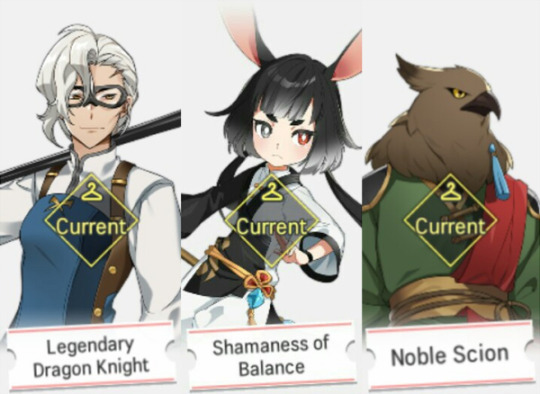
i just want to see what the designers would come up with
#loh 30 day challenge#'why not nine' son is perfect as is. though i hope they give him alts with shoes#same goes for laphlaes
6 notes
·
View notes
Text
Tempoyak, Siapa Tahu?
Hai Netizen Tumblr yang budiman ! Ini adalah hari ke-13 aku mengikuti program 30 Days Writing Challenge. Setelah sekian hari aku mencoba menulis (lagi) puisi dan cerbung, ternyata menguras energi juga ya! Okey, hari ini aku akan menjadi diriku sendiri. Membagi salah satu pengalamanku di tanah Andalas bersama orang-orang tercinta di hidupku. Oh ya ! Kenalin, Aku Diah, biasanya sih pada manggil "Dii". That’s why kenapa nama tumblr ku dii.pitaloka, hehe.
Okey, langsung aja deh aku cerita ya! Ada yang tahu apa itu tempoyak? Ya, aku saja dulu aneh mendengar namanya. Tempoyak ini adalah sejenis makanan loh, sobat! Makanan yang cukup khas juga dengan Tanah Melayu. Tempoyak adalah makanan yang berbahan dasar daging durian yang telah matang dengan tekstur lembut seperti selai. Baunya yang khas dan segar membuat tempoyak ini kerap dijadikan sambal dan campuran untuk membuat olahan ikan. Rasanya? Jangan ditanya, hehe. Segar campur manis deh, dijamin bikin nagih!
Proses pembuatan makanan yang banyak diproduksi oleh Kota Palembang ini cukup sederhana yaitu daging durian dipisahkan dari bijinya kemudian dicampur dengan garam kristal. Jika daging durian dan garam kristal sudah tercampur merata, maka langsung saja masukkan ke wadah tertutup kedap udara. Terakhir, setiap satu pekan sekali kita harus membuka tempoyak tersebut untuk membuang air yang dihasilkan selama proses fermentasi tersebut. Akhirnya, jika telah satu bulan proses fermentasi berjalan, maka tempoyak siap dinikmati ! Nyam, siapa yang mau hayo?
Menurut saya tak banyak yang tahu tentang tempoyak ini, Saya tergugah sedikit mengulasnya karena melihat salah satu kartun besutan negeri Jiran menayangkan tempoyak dalam ceritanya.
Asal mula tempoyak dari mana juga saya masih belum tahu secara mendalam. Namun, tempoyak ini memang dapat dengan mudah kita temukan di daerah Suku Melayu. Awal saya mencicipinya pun adalah saat berkunjung ke rumah kakek di pelosok Lahat, Palembang. Okey, semoga menambah wawasan kita tentang negeri ini ya. Indonesia itu gemah ripah loh jinawi!
1 note
·
View note
Text
KLMBH #284 @ Sg Buloh - A Re-Bash of the FRB/ E-Bike Route 18 Nov 2018

After having missed so many KLMBH bashes this year, I decided it was appropriate to hit an old favorite of mine from years ago; the area around Sungai Buloh Prison and Tuan Mee Estate. Having set a couple of bashes and numerous Petaling HHH runs there, it was great to revisit my old stomping grounds.
Before starting, I needed to make sure my 53-year-old tantalum-infused battery was fully charged, which I did with some whole grain cereal, oat milk, blueberries and a couple of cappuccinos. Packed up my 4WD, and set off for the bash venue; a sweet and simple 30-minute drive using the NKVE, N-S and LATAR highways.

Pic: Nice place to clean off my bike and body later!
At the ride site, topped up the charge in that tantalum-tainted battery, made sure I had 3L of H2O in the pack, a few USB-power banks, and set off with intent to complete the entire 43-km FRB/ E-Bike route.
I was forewarned by Mark Boogaers that the trails were extremely muddy thanks to bulldozers hitting up a few sections of the palm estates, and it really was in dire shape. At least five sections were impossible to ride through and I had to succumb to doing a “Cock Lopper aka UniBall aka Lloyd routine” ... carry bike through said muck which was up to my shins in some places!

Pic: one Santacruz Hightower with a 1x11 which was the perfect combination for this route.
At this spot I pulled out my USB charge stick to plug it into my body for a little top-up. Fortunately it came with a squeeze option since the connectors were a little muddy.
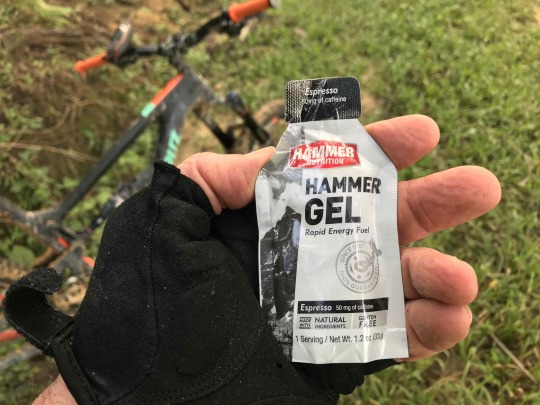
Pic: My recharge device. Hammer Nutrition’s Gel ... ideal for a little top up and with a tad bit of electrolytes.
Somewhere along the way I encountered the dogs and a kampung that Mark had flagged in his track file, and they were quite friendly. Think it was at km13. Stopped to scratch their ears.
Next I encountered water buffalo and they wanted a sniff and a scratch. The younguns were the most inquisitive while the female ran away ... not surprised!

Pic: a herd of water buffalo. The herders were standing to the left and watching with humor as this gwai loh was trying to entice these critters over for a pat on the head!
The one issue with riding and not following paper is that I managed to miss the trail a few times. At least I didn’t go too far off track, and would turn around after a glance at my GPS.

Pic: an example of one area that had been logged on the Long loop. Holes were already dug for new palm trees to be planted.
Just a little over the halfway point, above a tunnel going under the highway, I sat down and decided it was time to pull out another USB charge stick. It took 10minutes to get a full charge, and I was back on my way!

Pic: The latest charge device - Hammer Nutrition’s Perpetuem Solids. Great supplement for events over two hours in length! Three of these tablets did me justice!

Pic: my clean shoes (really ... this is clean compared to an hour previous) and a hefty does of lubricant required for my bike chain!
In addition to the mud I had to encounter, I had a few technical issues which were all sorted in due course. Nothing major; GPS had some hiccups and my gears seized up three times (too much swimming in Ulu Renning finally catching up to my derailleur!).
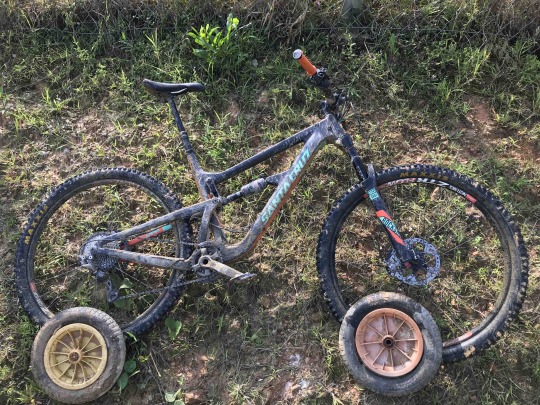
Pic: contemplated changing wheels too in mid-route. Difficult decision and I regretted leaving those 12″ bad-boys behind!
By this point I was on the last loop and it was very pleasant riding. Think the most “challenging” sections were in the first 13-km, but everything was rideable ... except for the muddy sections which needed to be walked. I pitied those attempting it with a 20-something kg e-bike. Oh no, wait, please go and ride it now :p!
Decided to go up to the Effluent Pond which is a place I took people around years ago, and big mistake. Gag, choke, retch ... escaped without losing my cookies!
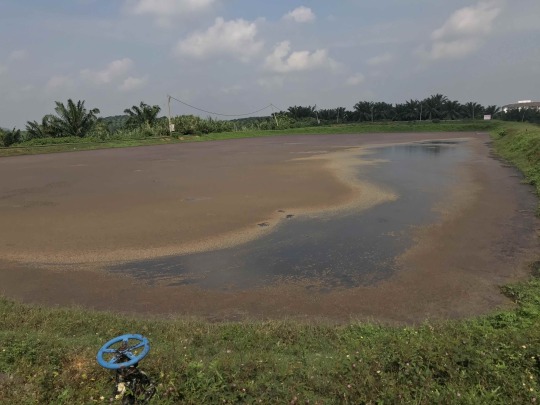
Pic: one of four effluent ponds.

Pic: guess swimming in this isn’t recommended
And on my merry way I went, still within Tuan Mee Estate.
Passed under the highway by the Petronas Stations and then again by the Tuan Mee Estate staff quarters, and by that time I was about 12-km from home.

Pic: Staff Quarters this way!
And now it was a fast-paced ride back to the intersection of the short/ long split.
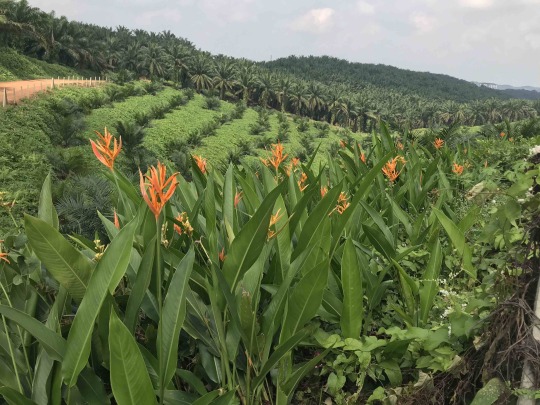
Pic: Yup. TDF actually took a pic of flowers. Palm planted on forehead!

Pic: last stretch before the home trail!
I managed to finish the ride in 4 hours 50 minutes, which I wasn’t too happy about, but considering the mud, technicals, picture taking and recharging stops, I guess it was ok!
Vital Stats for the Day:
Distance: 44.95-km
Altitude Gain: 1,124-m
Time: 4′53″
Calories Burned: 2,122
Max Heart Rate: 181 bpm (no lightning strikes near me this time!)
Battery charge: almost full and still going as I type!
Relive Video: click here
Disclaimer: I do not sell and am not sponsored by Hammer Nutrition :-)
Thanks to the Hares who set this route. Nicely connected and clearly took a lot of time to recce.
For those of you that think an e-bike is required to do this distance, it is not! Go join the Tour de France if you want to ride one of those toys! Regardless of what steed you opt for, recommend waiting until the next dry spell to do this bash again!
Signing off,
TDF
2 notes
·
View notes
Text
Chapter 62. US Return

Wow - it’s been awhile. Although we moved from London to Chicago in May, I’m only writing this post in September.
It was a busy summer: a bachelor party in Austin, adventure race in Wisconsin, and reunion tour through Portland and Seattle. Oh, and we were just getting used to our new home, Chicago.
We arrived back in the US on May 28, 2021. Writing this now in September, I can safely say that Chicago has exceeded expectations in so many ways.
I’ll start with the weather. Everyone talks about how cold the winters are - rightfully so - but this discounts Chicago’s glorious summer. Of the first 90 days we’ve lived here, ~80 have been 80+ degrees.
Whereas a London summer may still require a jacket or umbrella, I don’t even consider anything other than shorts & a t-shirt in Chicago.
With all this extra sun and warmth, Chelsay and I take daily runs and walks with Indy through Lincoln Park: along North Beach at sunrise, and to North Pond’s dog meet-up around 5:00 (aka “Yappy Hour”).
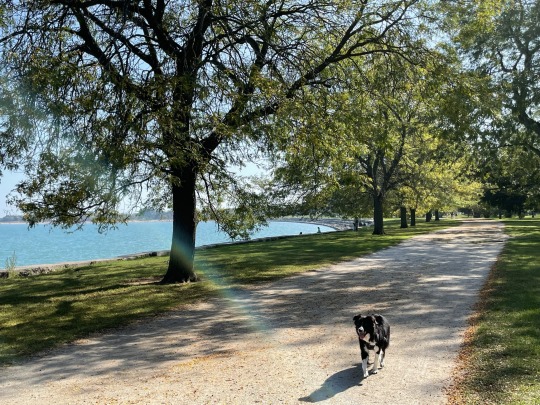
Great weather has also provided an ideal introduction to Chicago‘s summer activities, including Cubs games at the immaculately renovated Wrigley Field, boating on July 4th, al fresco dining, and exploring Chicago’s diverse neighborhoods by Divvy bike.
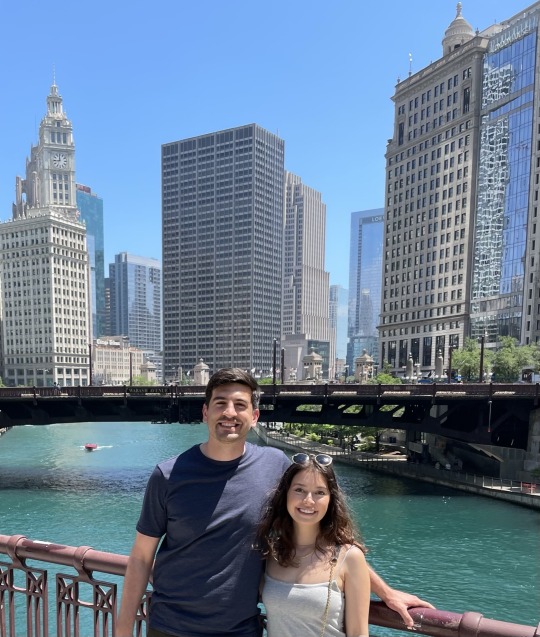

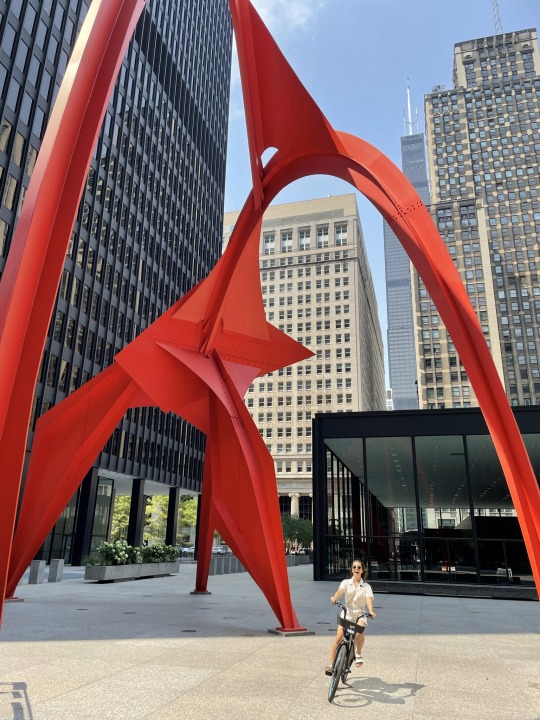
youtube
And of course, Chelsay and I have enjoyed being closer to family, the primary reason we moved to Chicago. After six years abroad, we’ve savored the impromptu dinners with my parents, weekends with Jeff and Liv, or welcoming Matt and Emily when they also moved to Chicago. London and Sydney are geographically far away, but they FEEL even more distant. It was great to Facetime and hear about family game nights, or dinners, or the latest survival shows they watched together, but we’re now relishing the opportunity to finally participate.
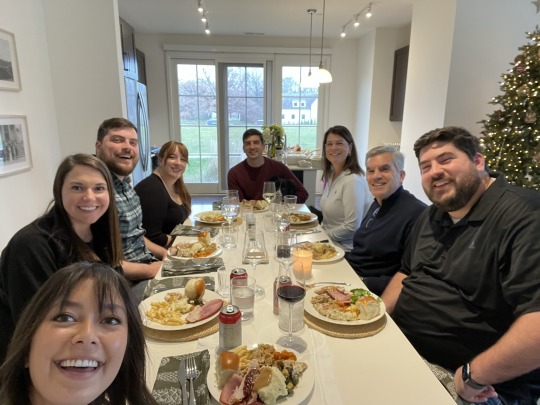
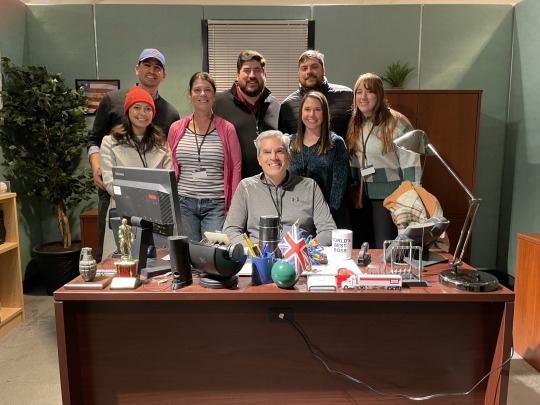


youtube
Beyond simply enjoying their company, Chelsay and I have also benefited from being so close to my parents. I want to specifically remember how much they’ve contributed to our smooth return. Before arriving, my parents drove around the North Shore, “scouting” neighborhoods and touring potential temp-housing. They’ve shared city recommendations and watched Indy through our summer travels. They’ve peppered us with potential homes and cleverly researched specific houses we targeted. They accepted the (dozens of) Amazon boxes we ordered pre-arrival and loaned us every home necessity while we waited for our UK shipment.
With our previous international moves, it took months of apartment tours and furniture shopping and discomfort before Chelsay and I had a ‘home’ established. Thanks to my parents, we were settled over Memorial Day weekend.
It’s a good thing we were settled quickly. After just two weeks in Chicago, I began my Summer Tour where I’d be away 5 out of 6 weekends.
The string began with Devon’s bachelor party in Austin. I was in-charge of planning, a challenge even before considering it was a group of ~20.
It was all worth it the second I arrived though. Although it’d been almost two years since I’d seen Devon, Hanan, A Loh, and Martiin, we picked up right where we left off. Like a day hadn’t passed. It was also great to catch up with the other Skyline guys (Derek, Danny, Trav, and Ju) and meet Dev’s Menlo teammates.
I booked an AirBnB large enough for the entire crew to stay together. We catered Guero’s and ate around the pool, stayed out on Rainey Street a little too late the first night, rallied the next morning for our Lake Travis party barge, then crashed the second night – especially the groom. I arrived in ATX as a boy, but left 36 hours later as a man.
As if a bachelor party in Austin wasn’t hard enough on my body, my dad and I had trained for an Adventure Race the VERY NEXT weekend. The Stubborn Mule race is hosted in Washburn, WI – aka the middle of nowhere – and includes 30 miles of biking, 10 miles of orienteering, and 6 miles of kayaking on Lake Erie.
I signed my dad and I up as a Christmas present, and had been nervous about the race ever since. After a year in lockdown, I wasn’t in my best shape and these distances sounded grueling. To be clear, my dad and I had no aspirations about winning the race. The other racers are survivalists – park rangers or adventure athletes that train year-round and travel across the world to compete. My dad and I just saw the TV show ‘Alone’ and thought it looked fun – all we wanted to do was finish!
In training, I was especially concerned about kayaking, as I had no mechanism to work my back. The main reason I went surfing every day in Cornwall was just to paddle – it didn’t matter if the water was flat. At least I was getting a workout before this Adventure Race.
Luckily our apartment in Chicago had a rower, and my parents loaned me a bike once we arrived. One day, as a pre-race test, I went on a back-to-back-to-back 4 mile run, 3 mile row, and 26 mile bike ride up to Wilmette. I was okay, which gave me confidence. The distances weren’t that bad – but I’ll never forget the clouds that rolled in as I was arriving in Wilmette’s Gillson Beach. With a 13 mile ride back to our Lincoln Park apartment, the skies opened. It was an onslaught of water. Biblical. My t-shirt was drenched, pants soaked, and shoes so wet that water would flood out as I was pedaling. Instead of the constant drizzle of London, month’s of rain seemed to come down in just one hour. ...Fingers crossed the weather would be better on race day.
The race was hosted as far north as Wisconsin goes – 7 hours from Chicago (!), in what locals refer to as “Up Nort”. These are small, small lake towns, where the gas station has all the groceries residents need. Which for ‘Sconies, is just kielbasa and cheese curds.
Neither my dad nor I slept well the night before our race, but we fought through the nerves to arrive at the starting line around sunrise: ~6:00 AM. From researching previous Stubborn Mule race instructions, we’d strategically arrived early to plot our strategy.
The objective of this Adventure Race is to find as many hidden ‘checkpoints’ in as little time as possible. The catch is that the “course” is 100 square miles of dense woods, and racers that don’t capture the minimum number of checkpoints within 12 hours are disqualified. There are too many checkpoints in too large an area to find them all, so we’d need to be strategic. If we’re strongest in biking, we should maximize the checkpoints in that discipline. Vice versa with kayaking. Target the areas with concentrated clusters of checkpoints. Skip outliers.
With three disciplines and 100 square miles of “course”, navigation was also an obstacle. We had a total of six maps: topographical maps to show hills and depressions, road maps, ski runs (!), bike trails, etc. My dad and I used our pre-race hour to orient ourselves and plan the optimal approach.

We felt confident in our strategy as we set out, and only gained more assurance as we easily identified the first few checkpoints. The first discipline was land navigation around a ski area, and we quickly found enough checkpoints to move to the next section. My thoughts: “Wow – this isn’t so bad… We’ll be done in no time. Maybe I can move the post-race dinner reservation earlier!”
The reality check came in our second discipline: mountain biking. We essentially had to climb the ski run on our bikes, but via poorly manicured trails. The slope was steep, dirt heavy, and the many roots and rocks along the trail made it impossible to build upward momentum. We were only 90 minutes into a 12-hour race and already struggling. Having not found a single checkpoint in our first two miles of mountain biking, we made the incredibly tough choice to head back to the homebase. The race requires teams to find at least one checkpoint for every discipline, and there were only a few biking checkpoints remaining. Though this audible conserved vital energy, it added extra pressure to find at least ONE biking checkpoint later in the race.
We returned from mountain biking to enter the third section, which was a mix of biking and orienteering. The checkpoints were all around 7 miles away, via the same mountain biking path we’d just left, so we opted for the much longer alternate: a 12 mile ride along the local highway! Potentially motivated by cars whizzing by us, my dad and I made great time on this section, eventually finding quieter dirt roads for the last few miles.

Our positive momentum continued when we found a biking checkpoint en route – thank god! We’d now “collected” checkpoints for both orienteering and biking, so only needed one checkpoint while kayaking to meet the minimum race requirements.
With a high concentration of orienteering checkpoints nearby, my dad and I decided to invest extra time (and energy) finding checkpoints here. We’d essentially skipped the mountain biking section and, thanks to our highway biking, were actually making great time overall. We thought to ourselves: we’re not only going to finish, but we MIGHT have a chance to beat a few people… We needed to collect more checkpoints to truly contend.
Orienteering was harder than I thought though. I’ll start by saying that it was a lot of fun, but I’ll also admit that it was grueling. The checkpoints are spread throughout the large course, and extremely well hidden in dense woods. There are no trails, no signs, no roads. My dad and I would be trudging through ferns with the only semblance of navigation being our compass and, thanks to the topographical map, whether we needed to go uphill or downhill.

Credit to the race organizers for hiding these checkpoints so well, because there were several instances where we were within 10 yards (on a 100 square mile course) and couldn’t immediately find it.
youtube
I want to specifically remember checkpoint 16. CP16 was crucial because it was at the center of five other checkpoints – if we could find CP16, it would be a reference point for finding the others nearby. From the topographical map, we knew it was on *some* downhill slope *about* two miles off the bike trail. Fast forward an hour (remember: must complete race in 12 hours), and we still hadn’t found the checkpoint. We’d gone up and down ravines, retraced our steps, and were likely going in circles. At one point, we agreed we’d cross a densely wooded 30-foot-tall ravine. Before descending, I paused to find the least wooded path across, which was ultimately walking on top of a fallen tree. By the time I looked back to my dad, he was gone. All I could see were treetops violently swaying as he bruised his way straight down. This will be the lasting image from the race.
We eventually found CP16 after another 30 minutes, but were gassed. We decided to skip the nearby checkpoints to save a little energy for kayaking.
We retraced our steps back the bikes and made our way to the beach, where race organizers helped get our kayak into the water. The organizers commented on my dad and I’s great time, which gave us a necessary confidence boost heading into the discipline we’d been dreading.
There were only two kayaking checkpoints, and racers were required to find at least one… If this turned into another CP16, we’d be screwed…
Luckily Lake Erie was relatively calm, and my dad and I were motivated by the thought that we MAY not finish last! We rowed hard – so hard that our hands blistered. And we didn’t stop. We blitzed through the first four miles (out of six) in record time, arriving in the vicinity of our required kayak checkpoint. The map showed the checkpoint located in a small inlet, but it’s hard to find inlets when you’re on the water – you have to stay close to shore to follow the map’s coastline. We tried one inlet without success, but as we were exiting, we spotted two paddle boarders leaving another nearby inlet. This was a huge! We now had a reference point and used it to triangulate the checkpoint. Re-tracing the paddle boarders path, we found the coveted kayaking checkpoint, officially meeting the minimum requirement to complete the race!
Lifted by the knowledge that we would at least “finish” the race, we crushed the final two miles of kayaking. Having started the race just aiming to survive, we were now conscious of our final score – we might not get last! Overall, we posted one of the fastest kayaking times that day.
We arrived at the beach for the final biking leg: roughly 8 miles to the finish line. One optional orienteering section remained, but having collected the required checkpoints, my dad and I decided the race was already a success. We crossed the finish line with a time just under 10 hours.

Post-race, we enjoyed one of the most satisfying burgers I’ve ever eaten, and slept hard that night. The race results were posted soon after and, to our pleasant surprise, we finished 36th out of 40, with two additional teams not meeting the minimum checkpoint requirements. Not only did we finish, but we beat six teams!
The race was a highlight of the summer not only for the adventurous challenge, but for the quality time I got to spend with my dad after years abroad. And also for the memory of my dad bowling through the woods attempting to find CP16!
After Austin and Wisconsin, the next weekend was Independence Day. Chelsay and I didn’t have any travel plans, so used the time to explore both the city neighborhoods and potential homes in the North Shore. We also joined my parents for boating the evening of the 4th. Having not seen July 4th fireworks in six years, I’ll always remember that evening’s unique and patriotic views from Lake Michigan.
youtube
The next two weekends would be spent in the Pacific Northwest, visiting Chelsay’s family in Portland and Seattle before attending Devon’s wedding in Winthrop, WA.
The trip began with a day at Chelsay’s grandparents’ house outside Portland, where we admired Grandma Helen’s meticulously manicured garden and played cornhole with Grandpa Nick.

We then took the Amtrack up to Seattle – while streaming the England vs Italy Euro Final, which England heartbreakingly blew by missing three straight penalty kicks.
We spent the next few days in Woodinville with Chelsay’s parents, enjoying our go-to Seattle dinners (Firenze’s amatriciana, Din Tai Fung’s xiao long bao, La Carta de Oaxaca’s rice and beans) while adding a new staple: Southgate Garden Korean BBQ. Just driving by, you wouldn’t think much of this restaurant. It’s behind a gas station and, based on the ‘1970s diner’ interior, my guess is the new tenants chose not to update. Instead, they spent their money on the meats because the dinner was phenomenal. It’s probably the most full I’ve ever been.
I’m always impressed by our hikes in Seattle. Every time we visit, I regret not taking advantage while we lived there. We enjoyed Wallace Falls, but the coolest walk was right in Danny & June’s backyard. From their apartment in Bothell, a nine-mile trail loops through Woodinville’s newly developed Woodin Creek restaurant area, along the Sammamish River, and past Woodinville’s wineries.
This trail was very cool. As I haven’t had a car for the past six years, I probably haven’t written about how much I hate traffic. Chelsay likes to name the chapters of our lives, and she used to say I’d name the Seattle chapter, “Why is there so much traffic!?” But the loop trail outside of Danny & June’s place avoids any need to drive – it’s a walker’s oasis in a desert of gridlock.
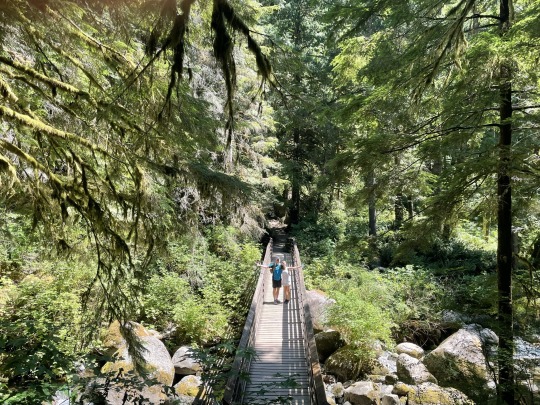
After visiting Chelsay’s parents, our next stop in this Pacific Northwest tour was Winthrop, WA. It’s in north-central WA, four hours northeast of Seattle and very close to the Canadian border. It’s about two hours north of Leavenworth, so Chelsay and I briefly visited Alex and Charlie to float the river.
I have to admit: I lived in Seattle for nearly a decade but never heard of Winthrop. This is just another reminder of how little we took advantage of the Northwest because it was the perfect setting for Devon & Barbara’s wedding.
There are strong Yellowstone vibes here. Hot weather, expansive ranches, and towering mountains. Even the resort, Sun Mountain, reminded me of a National Park lodge. Timber frame, woodland wallpaper that felt like a grandma’s cabin, and jaw-dropping views of the dramatic landscape.
Although our room’s balcony had beautiful views, Chelsay and I found the best way to see the area was by horseback. In a bizarre coincidence, our guide lived in Southlake [what are the odds??], and this connection explains why she was the first guide to allow us to canter. It was a blast.

But horse riding was just an appetizer. The main dish, and the reason we’d all come up to Winthrop, WA: Devon and Barbara’s wedding.
The day had all the usual ceremony prep: the bridesmaids started getting ready 8 hours before the ceremony, while the guys went and played on a 20 foot rope swing. Risky move on the wedding day.
We managed to clean ourselves up in time, and before we knew it, it was time to walk down the aisle. The setting was beautiful: a bluff overlooking the Yellowstone-vibe valley below. The guests, groomsmen, bridesmaids, and especially bride and groom looked their absolute best. And there was extra emotion with one guest, Dev’s mom, spiritually present.
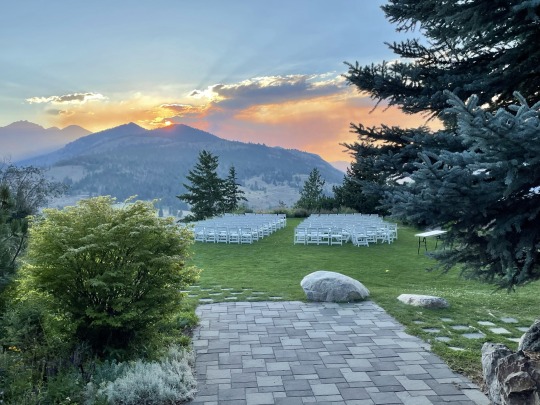
Deb’s spirit provided an atmosphere for the whole day: emotional, yes. But most of all: celebratory and, true to Deb, fun. It was the best party I’ve ever been to, and that includes my own wedding.
The Paris crew had been practicing since the Sweat Fest of the Seine, and absolutely owned the dancefloor. About 10 Skyline guys and their wives took half the dancefloor, and the other 200 guests got whatever was left. I never want to forget Hanan’s dance moves to ‘Pour Some Sugar on Me’: air guitar, kicking, raising the roof, and the mullet whip.
Someone requested Will Smith’s ‘Wild Wild West’, so I gave the people what they wanted: the disco cowboy. And Barbara’s dad showed some memorable moves. Devon’s observation: “Are his knees made of slinky!?!”
And what wedding would be complete without every guest circling the bride and groom for their last dance of the night, followed by an after party (in THEIR room?!). The night closed with the full Paris crew huddled closely, yelling ‘Piano Man’ in each other’s faces.
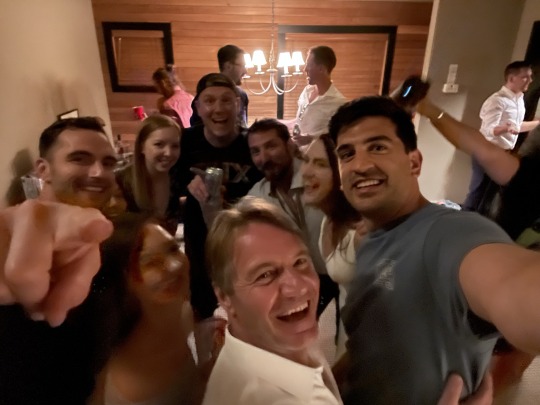
It was the best party I’ve ever been to, and equally, a perfect encapsulation of why Chelsay and I were ready to return to the US. It had been a busy six weeks: moving from London, reuniting with family in Chicago, a bachelor party in Austin, the adventure race in Chicago, hanging with Chelsay’s family in Portland and Seattle, and now Dev’s wedding in Winthrop.
But that wonderful six week run would not have been possible while abroad. We would’ve stretched a trip to cover two weekends, missing out on the other lifelong memories with friends and family.
After six years abroad, this is ultimately why Chelsay and I finally returned to the US.
Our loved ones are here, and it was time to come home.
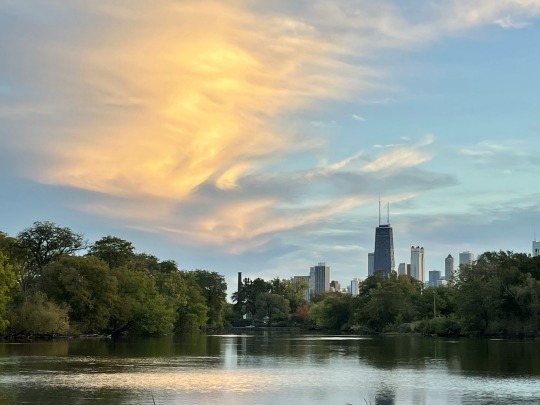
0 notes